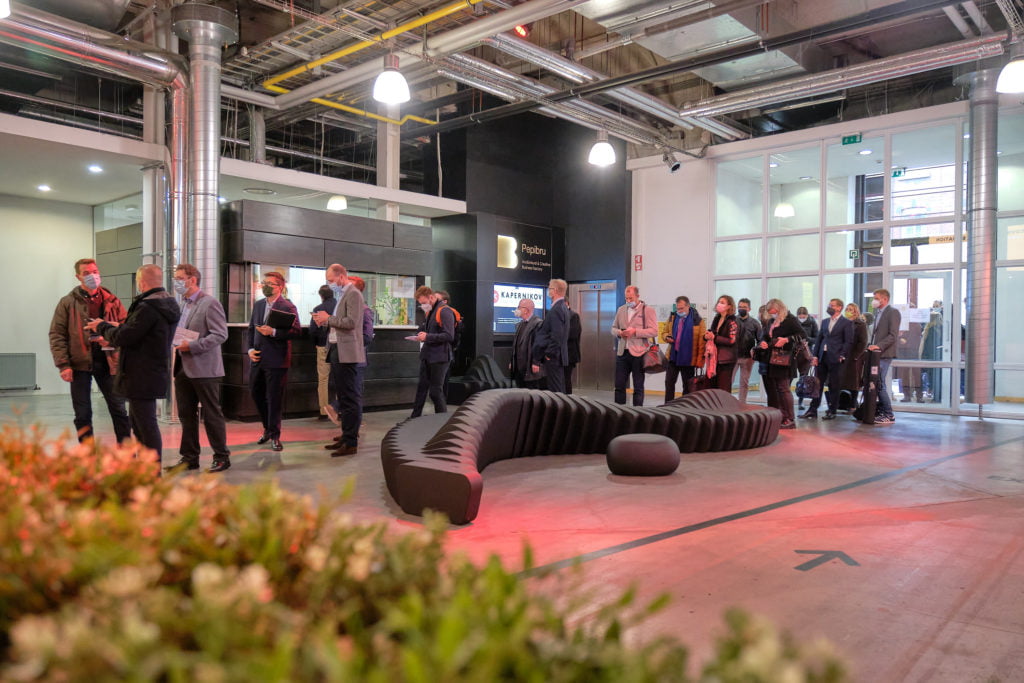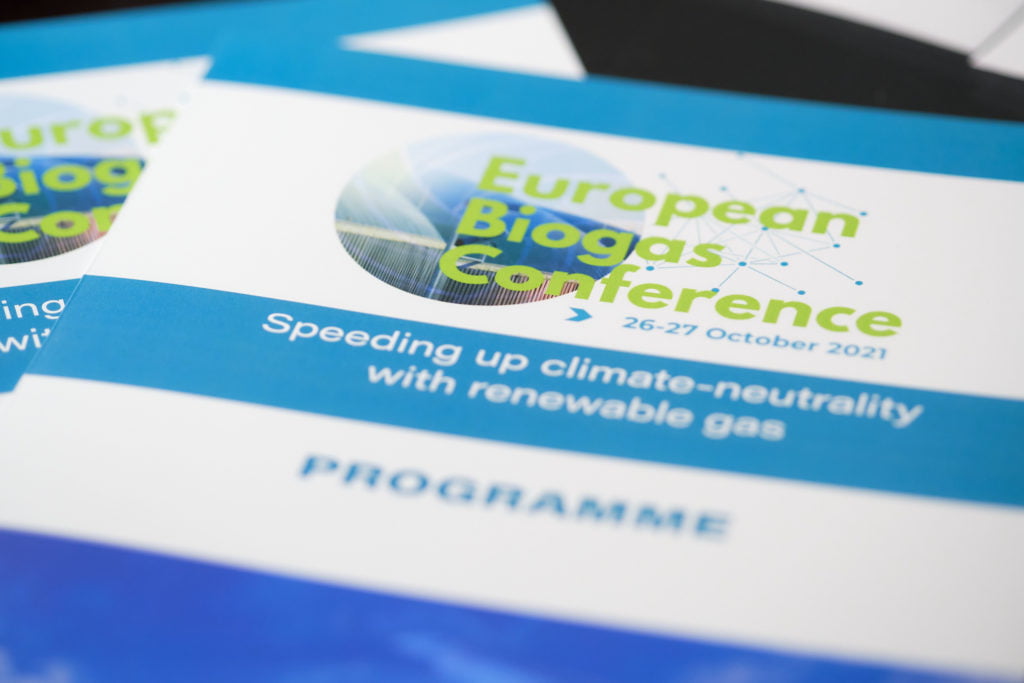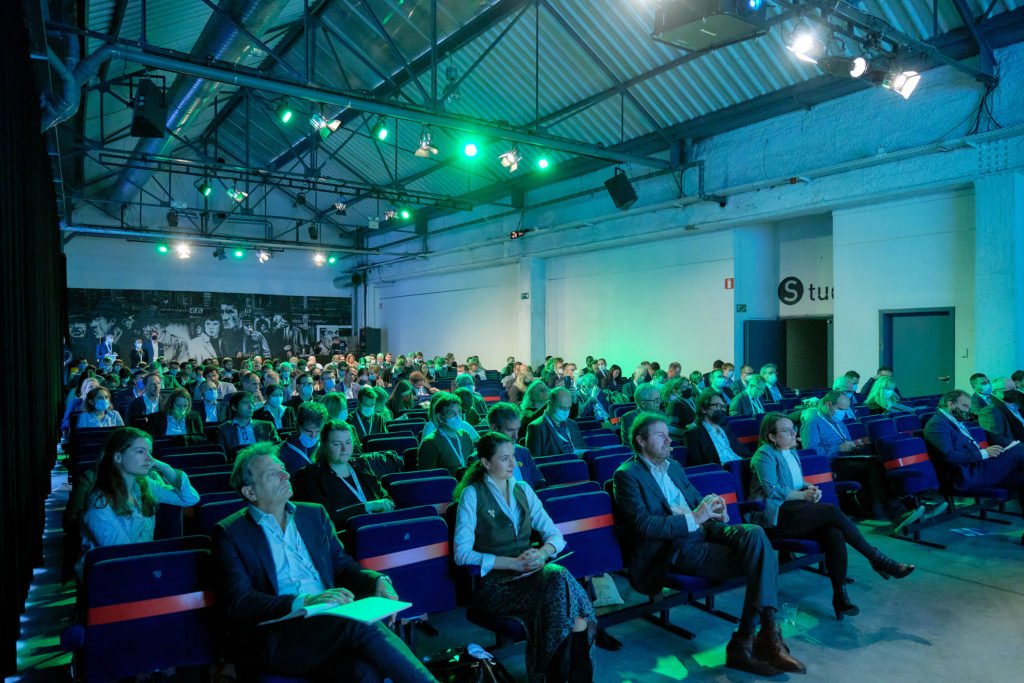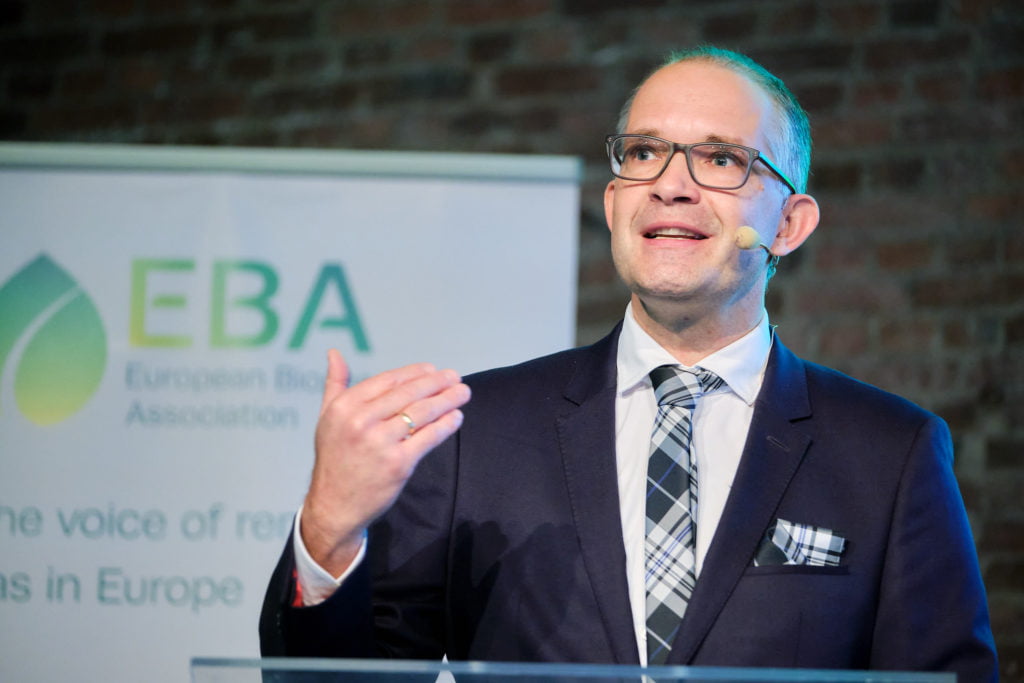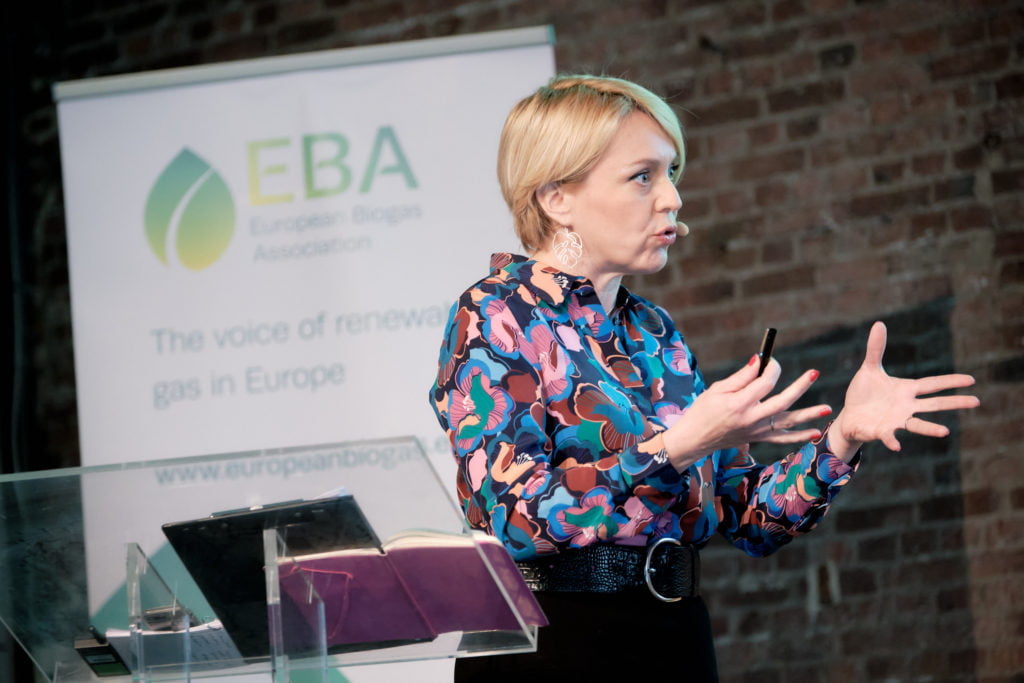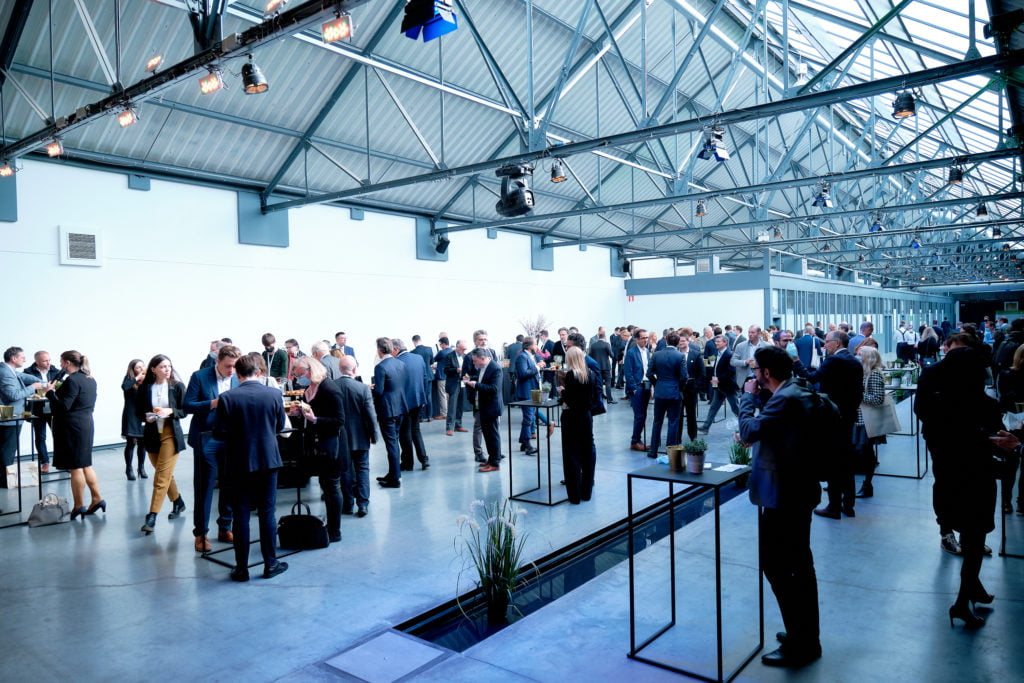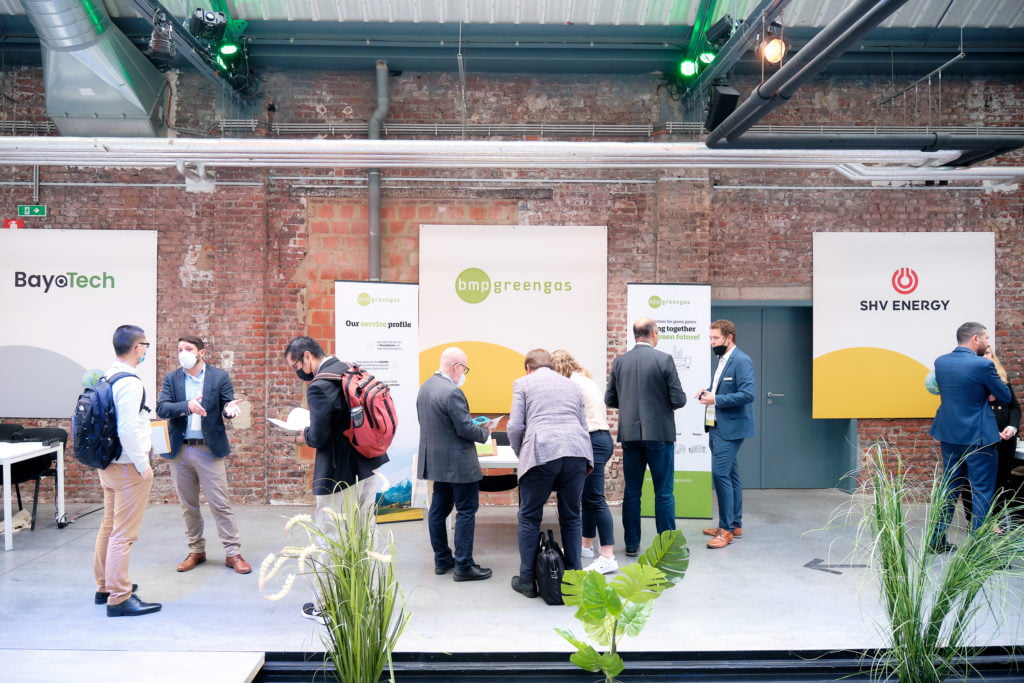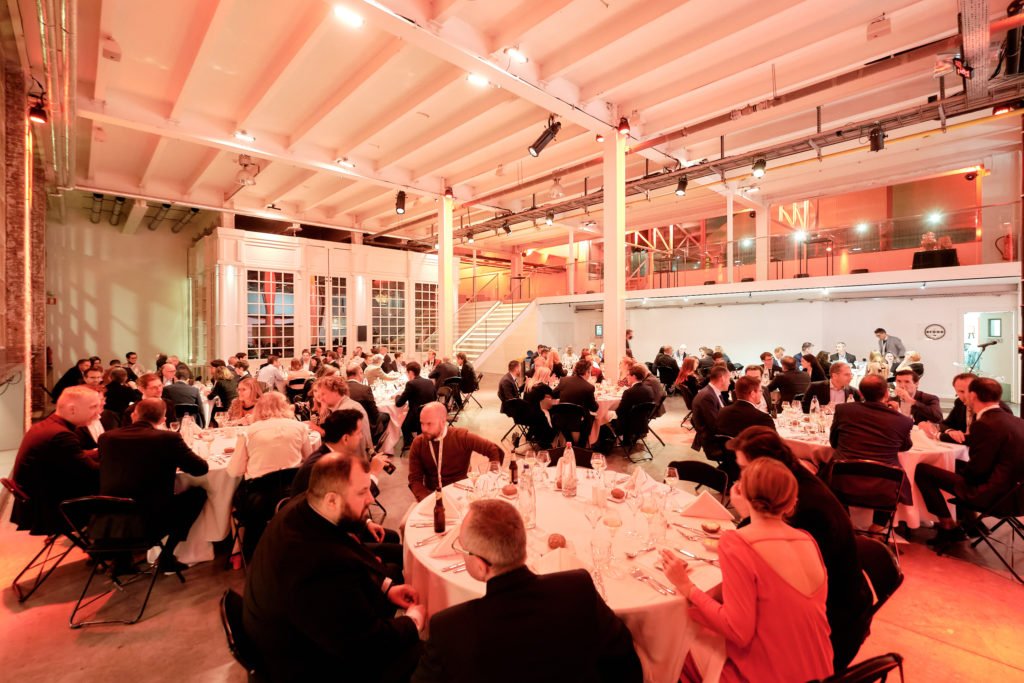Brussels 31/03/23 – EBA welcomes the provisional political deal reached yesterday on the Renewable Energy Directive (RED). The Directive will raise the share of renewable energy in the EU’s overall energy consumption to 45%. This will put Europe on the right trajectory to meet its climate neutrality target by 2050. Biogas and biomethane will deliver sustainable and flexible solutions to buildings, power and transport sectors. If the measures on accelerated permitting procedures for renewable energy projects, proposed in the directive, are accompanied by improved administrative capacity at member state level, this will help delivering the 35 bcm biomethane target by 2030.
The whole biomethane value-chain, including manufacture of anaerobic digestion (AD) and gasification systems, is solidly based in the EU. EBA also supports the Commission’s plan to monitor workforce demand and supply and to facilitate the set-up of training programs. The biogas and biomethane sector today provides more than 220,000 jobs and will provide 420,000 and 1 million jobs, by 2030 and 2050 respectively.
Biogas and biomethane are delivering on sustainability, which is a necessary condition for the further growth of our industry. Clarity, legal certainty, and long-term perspective remain necessary conditions for a favourable business environment. The retroactive application of the GHG emissions savings criteria, mentioned in the agreed proposal, will result in exaggerated cost compliance for market operators and risk to erode investors’ confidence at a time when a prompt scale up is outmost importance.
The current renewable energies directive in force since December 2018 and proposes a 32% share of renewable energy in the total EU energy consumption by 2030. Once the new proposal enters into force, member states will need to define their specific contribution to the higher target.
Contact
- Angela Sainz – EBA Communications Manager, +32 483071046 sainz@europeanbiogas.eu
- Giulia Laura Cancian – EBA Secretary General cancian@europeanbiogas.eu
About the European Biogas Association (EBA)
The EBA is the voice of renewable gas in Europe. Founded in February 2009, the association is committed to the active promotion of the deployment of sustainable biogas and biomethane production and use throughout the continent. The association counts today on a well-established network representing the whole biogas and biomethane value chain. www.europeanbiogas.eu
About biogas and biomethane
Biogas is produced from the decomposition of organic materials. These residues are placed in a biogas digester in the absence of oxygen. With the help of a range of bacteria, organic matter breaks down, releasing a blend of gases: 45 – 85 vol% methane (CH4) and 25 – 50 vol% carbon dioxide (CO2). The output is a renewable gas which can be used for multiple applications.
Biomethane – purified biogas – is a renewable alternative to natural gas. Its multiple applications include heat and power supply for our buildings and industries, and renewable fuel production for the transport sector.
Brussels 16/03/23 – EBA welcomes the recognition of biomethane among the strategic net-zero technologies in the Net-Zero Industrial Act. The new regulation proposal puts the supply of clean technologies at the center. Earlier last year the REPowerEU’s action plan featured the objective of 35 bcm (370 TWh) annual biomethane production by 2030, a twelve-fold increase from 2020 production volumes. Today’s NZIA proposal will facilitate the roll-out of the necessary industrial capacity to achieve the REPowerEU’s objective.
The whole biomethane value-chain, including manufacture of Anaerobic Digestion and Gasification systems, is solidly based in the EU. EBA also supports the Commission’s plan to monitor workforce demand and supply and to facilitate the set-up of training programs. The biogas and biomethane sector today provides more than 220,000 jobs and will provide 420,000 and 1 million jobs, by 2030 and 2050 respectively.
Contact
Angela Sainz – EBA Communications Manager, +32 483071046 sainz@europeanbiogas.eu
Anthony Lorin – EBA Policy Officer lorin@europeanbiogas.eu
Brussels, 15 September 2022 – “The European Parliament report on the Renewable Energy Directive revision, endorses a target of 45% renewable energy consumption in the EU by 2030, following the REPowerEU proposal in May 2022 to accelerate the continent’s independence from Russian gas. The European Biogas Association applauds the increased level of ambition, compared to the current target set at 32%. However, the Parliament missed an opportunity to completely streamline the report with the goals of REPowerEU by omitting a binding target to deliver the 35 bcm of sustainable biomethane by 2030, included in the REPowerEU proposal.” Explains Giulia Cancian, Secretary General of the European Biogas Association.
The revision of the Renewable Energy Directive represents a key element in the ‘Fit for 55’ package to help the EU reduce greenhouse gas emissions by 55% by 2030 and to strengthen EU energy security. The European Parliament position voted in plenary yesterday goes in the right direction. It refines on many levels the Commission’s proposal and keeps strong sustainability requirements, guaranteeing biogas and biomethane continue contributing to climate change mitigation.
The report takes into consideration investors’ trust, by correcting the retroactive application of the GHG emission savings criteria on existing plants (art.29.10) proposed by the Commission but includes a higher threshold for plants starting operations in 2026.
The legislation also defines sub-targets for some emissions-intensive sectors. While transport remains one of the most polluting and hard to decarbonize segments of our economy, the Parliament report fails to strengthen the Commission proposal on advanced biofuels (2.2% by 2030) while it bets on renewable fuels of non-biological origin, such as hydrogen (5.7% 2030).
The upcoming interistitutional negotiations within European Parliament and Council represent an opportunity for EU policymakers to perfect the Renewable Energy Directive, keeping high ambitions and cutting red tape for operators.
About biogas and biomethane
Biogas is produced from the decomposition of organic materials. These residues are placed in a biogas digester in the absence of oxygen. With the help of a range of bacteria, organic matter breaks down, releasing a blend of gases: 45 – 85 vol% methane (CH4) and 25 – 50 vol% carbon dioxide (CO2). The output is a renewable gas which can be used for multiple applications.
Biomethane – purified biogas – is a renewable alternative to natural gas. Its multiple applications include heat and power supply for our buildings and industries, and renewable fuel production for the transport sector.
About the EBA
The EBA fully believes in the future potential of renewable gas in Europe. Founded in February 2009, the association is committed to the deployment of sustainable biogas and biomethane production and use throughout the continent. EBA counts today on a well-established network of over 200 organisations covering the whole biogas and biomethane value chain across Europe and beyond.
Contact
Angela Sainz – EBA Communications Manager, +32 483 07 10 46 sainz@europeanbiogas.eu
Brussels, 7 July 2022 – Today, the Gas for Climate (GfC) consortium published an update on biomethane production potentials in EU Member States , building on the renewed ambition of the EU to accelerate biomethane production and the advancements in technology.
The study shows that enough sustainable feedstocks are available in the EU-27 to meet the REPowerEU 2030 target (35 bcm). In GfC’s estimate, up to 41 bcm of biomethane in 2030 and 151 bcm in 2050 could be available. This is significant as the current (2020) EU natural gas consumption is 400 bcm (of which 155 bcm was imported from Russia).
As such, biomethane can play an important role in meeting the EU’s 2030 GHG reduction target and achieving net-zero emissions by 2050. Additionally, biomethane can increase European energy security by reducing the dependency on Russian natural gas and can alleviate part of the energy cost pressure on households and companies. To achieve this, significant scaling up is required both in the short- and long-term as today, 3 bcm of biomethane and 15 bcm of biogas are produced in the EU.
Whereas Gas for Climate previously estimated the sustainable supply potential in the EU-27 (and UK) at 35 bcm in 2030 and 95 bcm by 2050, for the recent publication, sustainable production potentials were updated to reflect the most recent developments. In the paper, a unified methodology is applied to identify both the short- and long-term potential of biomethane production in the EU, Norway, Switzerland and the UK, based on sustainable feedstocks.
Overall potentials
Enough sustainable feedstocks to produce up to biomethane 41 bcm in 2030 and 151 bcm in 2050 (EU-27).
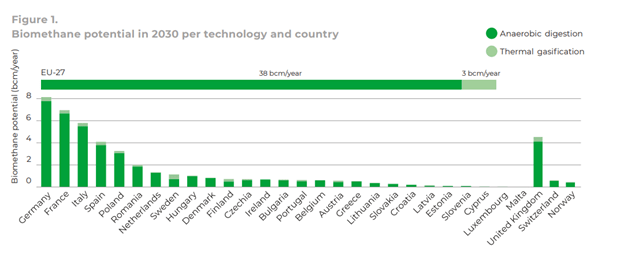
Breakdown of the overall potentials
- A potential of 38 bcm is estimated for anaerobic digestion in 2030 for EU-27 increasing to 91 bcm in 2050. The top 5 countries in both 2030 and 2050 consistently include France, Germany, Italy, Poland and Spain. Key sustainable feedstocks to achieve these potentials are manure, agricultural residues and sequential cropping, where the latter dominates the potential for 2050.
- A potential of 2.9 bcm is estimated for thermal gasification in 2030 for EU-27 increasing to 60 bcm in 2050. The top 5 countries in 2030 and 2050 consistently include France, Germany, Spain, Sweden and Italy.
- Even more biomethane potential can be unlocked by looking at additional feedstocks (e.g. biomass from marginal or contaminated land and seaweed, as noted in the REPowerEU plan), and technologies (e.g. hydrothermal gasification of wet feedstocks, including organic wastes and residues).
This is the first analysis of specific biomethane potentials per country that has applied a unified methodology at the European level. Therefore, following the renewed biomethane ambition by the EU, the 35 bcm target needs to be pro-actively translated by Member States into national targets incorporated into their National Climate and Energy Plans and appropriate measures (e.g. permitting, financing, certification, etc) enacted to scale up their sustainable domestic biomethane industries.
[due to technical maintenance of the Gas for Climate website, this study is temporarily published on the European Biomethane Association website]
Notes for editors
Gas for Climate was initiated in 2017 to analyse and create awareness about the role of renewable and low carbon gas in the future energy system in full compliance with the Paris Agreement target to limit global temperature increase to well below 2 degrees Celsius. To this end, the entire economy has to become (net) zero carbon by mid-century.
The Gas for Climate group consists of eleven leading European gas transport companies (DESFA, Enagás, Energinet, Fluxys Belgium, Gasunie, GRTgaz, ONTRAS, OGE, Snam, Swedegas and Teréga) and three renewable gas industry associations (European Biogas Association, Consorzio Italiano Biogas, German Biogas Association).
Biomethane can play an important role in meeting the European Union (EU) 2030 GHG reduction target and achieving net-zero emissions by 2050. Additionally, biomethane increases European energy security by reducing the dependency on Russian natural gas and can alleviate part of the energy cost pressure on households and companies. The European Commission fully recognises these benefits and thus set a target of 35 billion cubic meters (bcm) of annual biomethane production by 2030 in its recent REPowerEU plan.
Today, 3 bcm of biomethane and 15 bcm of biogas are produced in the EU-27. Gas for Climate previously estimated the sustainable supply potential of biomethane in the EU-27 and UK at 35 bcm in 2030 and 95 bcm by 2050. Building on the renewed ambition by the EU to accelerate biomethane production and the advancements in technology, Gas for Climate has updated the production potentials to reflect these recent developments.
In this paper, Gas for Climate applies a unified methodology to identify both the short- and long-term potential of biomethane production in each EU Member State (plus Norway, Switzerland and the UK), based on sustainable feedstocks.
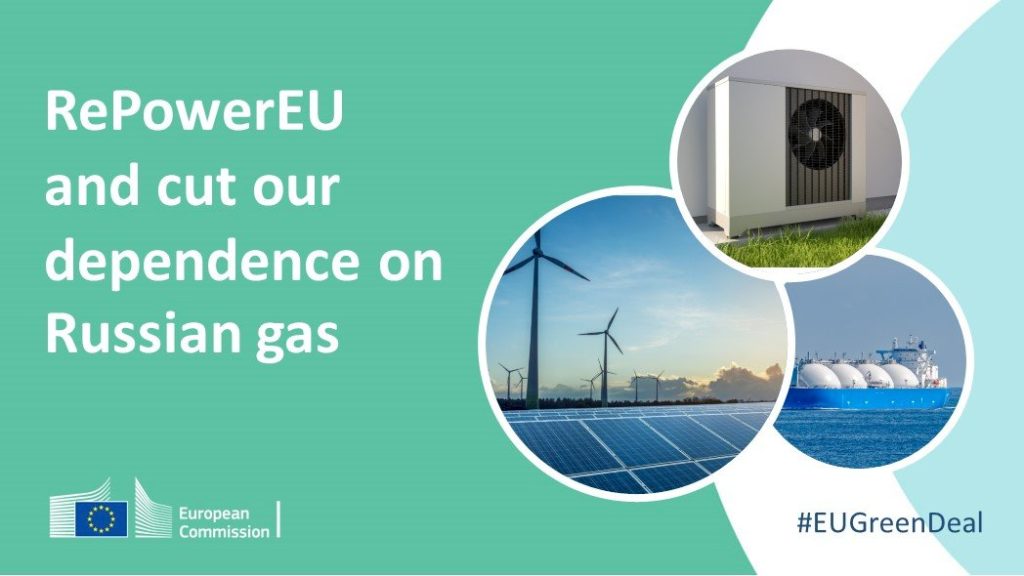
Brussels, 19 May 2022 – As part of its REPowerEU plan, the European Commission yesterday proposed a rapid acceleration of renewable energy including 35 bcm biomethane by 2030 and a new Biomethane Industrial Partnership to ‘support the achievement of the target and create the preconditions for a further ramp up towards 2050’. The biomethane value chain welcomes the biomethane target and the public-private partnership.
We represent a wider group of 30 companies and organisations. Last December we published the Biomethane Declaration, in which we called for a scale-up of biomethane to 350 TWh, based on an earlier 2030 potential assessment by the Commission. The 35 bcm target now proposed is even slightly higher than that. We are keen to cooperate in the new Biomethane Industrial Partnership with the European Commission, Member States, Members of the European Parliament and other relevant actors to support the scale up of biomethane to 35 bcm and its consumption across the energy system.
Harmen Dekker, CEO of European Biogas Association: ‘Today the EU shows leadership by further speeding up the energy transition, the Commission recognises that biomethane will play an important role in this. We are eager to work with the Commission and other stakeholders to create the new Alliance.’
For more information, please contact:
Harmen Dekker, European Biogas Association: dekker@europeanbiogas.eu; +31 654331782
Daan Peters, Common Futures: daan.peters@commonfutures.com; +31 634489780

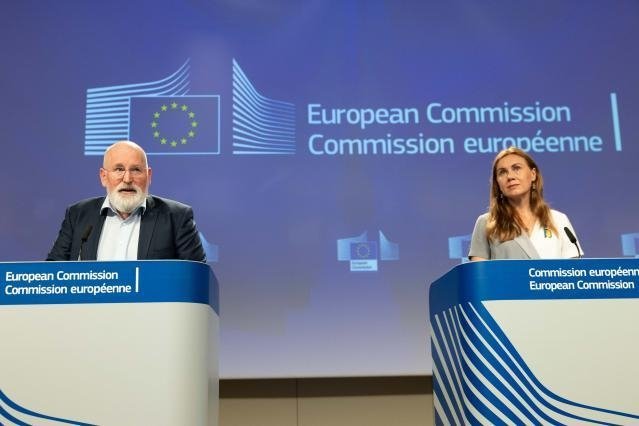
Brussels, 19 May 2022 – The REPowerEU detailed plan presented yesterday proposes a Biomethane Action Plan, including a Biomethane Industrial Alliance, to stimulate the renewable gas value chain and achieve the production of 35 bcm of biomethane by 2030. The plan includes a targeted revision of the Fitfor55 energy efficiency and renewable targets, together with the necessary measures to accelerate RES permitting and recommendations to facilitate renewable gas injection. This is a stepping stone to the achievement of climate-targets, the circular bio-economy and security of supply across Europe.
After the communication released last March, this new package provides a set of tools to disentangle the EU from Russian fossil fuels, as well as to boost the EU Green Deal and drive investment to a more sustainable, resilient and sovereign energy mix. The plan is structured around 3 key areas of action: diversification of energy sources, acceleration of the clean energy transition and increase of energy savings. This will require a smart combination of investments and reforms starting from this year. The full value chain of biogas and biomethane producers, and users, is ready to cooperate with public authorities and civil society organisations to identify current bottlenecks and propose solutions for a sustainable scale-up. The production of biogas and biomethane has already created 210,000 green jobs in Europe and is saving every year 60 Mt of GHG emissions (CO2 equivalent).
“The industrial alliance proposed by the REPowerEU is an essential instrument to steer cooperation between policymakers, investors and the biomethane value chain to drive technological innovation, address bottlenecks, such as cross border trading, and ultimately speed up the expansion of the sector. The 37 billion euros of targeted investments proposed by the Commission can support the development of new capacity and infrastructure to accommodate biomethane into the gas grid and create energy communities.” Explains Harmen Dekker, CEO of the EBA.
“The targeted revision of EU energy efficiency and renewable energy targets will speed up the green transition and contribute to a more resilient energy system. Shorter and more transparent permitting are a key conditions further development of the biogas and biomethane sector. We shall not forget about the dossiers that are being negotiated by the co-legislators: high targets should be accompanied by long-term perspective and clarity on REDIII sustainability requirements. The European Parliament and the Council have now a great opportunity to set a solid sustainability framework for biogas and biomethane encouraging the use of sustainable feedstocks and avoiding retroactive measures.” Points out Giulia Cancian, EBA Secretary General.
More information
- Factsheet REPowerEU: clean energy
- EBA position paper on REPowerEU
- EBA press release on REPowerEU communication on 8 March
- Statement Sustainable Biomethane Alliance on REPowerEU communication on 8 March
- DOWNLOAD PRESS RELEASE
Contact: Angela Sainz Arnau, EBA Communications Manager sainz@europeanbiogas.eu +32 24 00 10 89
The European Biogas Association, representing nearly 8,000 stakeholders across the whole biogas value chain in Europe, has appointed Anders Mathiasson as new President of the association. He will steer the work of the EBA for the period 2022-2025, together with 8 Board Members: Piero Gattoni, Stefan Rauh, Philipp Lukas, Niels Peters, Michael Niederbacher, Erik Meers, Olivier Aubert and Gregory Krupnikovs.
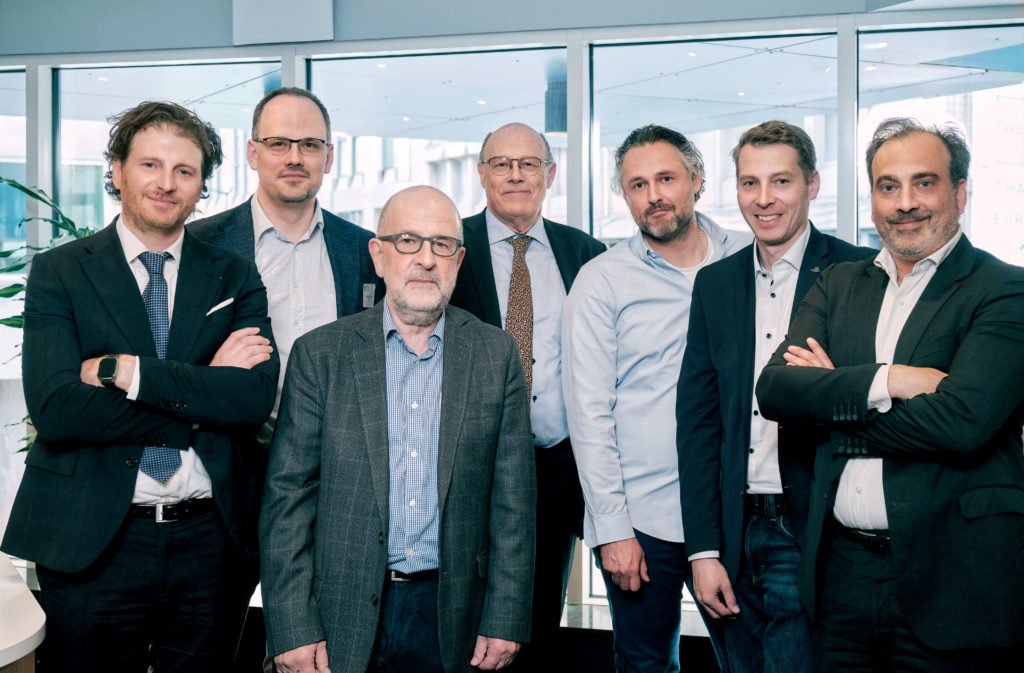
The EBA has grown significantly over the past years, reaching a membership growth of over 50%. Biogas and biomethane production are widely spread across the EU and the industry is now experiencing an accelerated expansion. Europe is producing today 15 bcm of biogas and 3 bcm of biomethane. The production of biogas and biomethane has already created 210,000 green jobs in Europe and is saving every year 60 Mt of GHG emissions (CO2 equivalent).
“The sector is set to play an important role in securing energy independency and climate-neutrality in Europe, enabling the transition towards renewable energy and all the benefits it can bring to local circular economies, with the relevant legislative support.” Explains EBA’s new appointed President. Just last March, the European Commission REPowerEU plan, aimed at ensuring EU energy independence while pushing for climate targets, proposed the deployment of 35 bcm of biomethane by 2030.
“Achieving the biomethane target will require significant efforts and dialogue between policymakers, investors and representatives of the biomethane value chain.” Highlights Harmen Dekker, CEO of the EBA.“Anders has been working in the energy and gas industry for over 25 years and was CEO of the Swedish Gas Association between 2004 and 2016. During those years, he has worked on improving the conditions for the use of biogas in the industry and transport sectors in Sweden. This expertise will proof highly relevant to support the development of the sector at EU level.” Explains EBA’s chief.
“Now is the right time to take new steps to develop the biogas market and production in Europe and strengthen domestic renewable energy production. I am honored to represent the EBA, supported by the rest of Members of the Board, in such crucial times to ensure that ambitious goals are set and achieved.” Concludes EBA’s new President.
The EBA President and Board Members were appointed this week during the General Assembly. They will be also supported in their work by the members of the EBA Company and Scientific Advisory Councils, elected last month.
8th of March 2022 – Today, the European Commission announced a target for the production of 35 billion cubic metres (bcm) of biomethane within the EU by 2030 as part of its REPowerEU plan. The biomethane value chain welcomes this target, which is a historic step forward and shows EU leadership. The target will replace 20% of natural gas imports from Russia by a sustainable, cheaper and locally produced alternative. Biomethane also helps to reduce exposure to food price volatility because digestate, a co-product of biomethane production, replaces currently expensive synthetic fertilisers.
We are a group of about 30 companies and organisations, coordinated by European Biogas Association and Common Futures. Last December we published the Biomethane Declaration. In this Declaration we called for a scale-up of biomethane to 350 TWh by 2030, which roughly equals 35bcm. As part of the 35 bcm target, the Commission wants to double EU biomethane already in 2022. This requires urgent and immediate action. Also, the biomethane target should be integrated in the EU Renewable Energy Directive and other legislation. We are keen to continue to cooperate with the European Commission and Member States to fulfill the new target.
Mobilising sustainable biomass feedstock and investing in new production capacity
The target can be achieved largely based on waste and residue feedstocks (see annex). Also, a role can be foreseen for sustainable crops produced in sequential or double cropping schemes without competition with food and feed production.
Today the EU produces 3 bcm of biomethane. Scaling-up to 35bcm requires the mobilisation of sustainable biomass feedstock, mostly waste and residues, plus building about 5,000 new biomethane plants. From a technical perspective this is feasible during the next eight years. And it’s cost-effective as well. Some €80 billion in capital investments would be needed, European money spent in our domestic economy. It allows us to produce biomethane at a cost that is considerably lower than the natural gas price over the past several months , even without the CO2 price. And in addition to building new integrated biogas-biomethane installations, it would also be possible to cost-effectively add methanation units to existing biogas plants. We also call for a rapid commercialisation of gasification technology, which allows for biomethane production from woody residues.
BREAKDOWN OF 35 BCM BASED ON AVAILABLE BIOMASS FEEDSTOCK
Contact:
Harmen Dekker, European Biogas Association: dekker@europeanbiogas.eu; +31 654331782
Daan Peters, Common Futures: daan.peters@commonfutures.com; +31 634489780

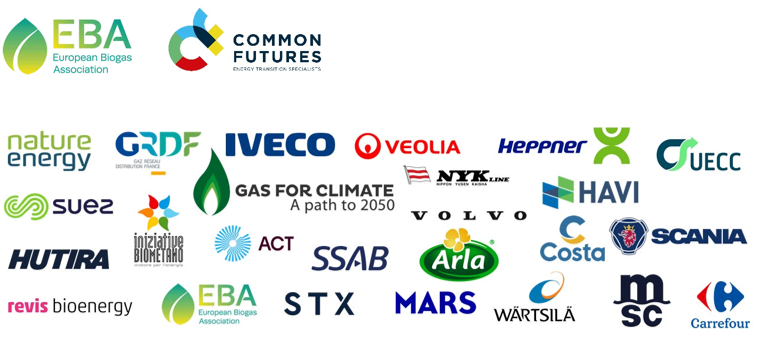
Brussels, 8 March 2022 – The European Commission communication REPowerEU released today is a decisive step towards the rapid development of the biomethane industry in Europe. “Europe needs to urgently diversify and reduce its dependence on Russian gas whilst stepping up on the ambition for the climate targets. The sector is ready to deliver the 35 bcm by 2030 proposed by the EU and calls for the inclusion of this target in the recast of the Renewable Energy Directive (REDIII), currently under development. Close cooperation between the European Commission, Members States and the biomethane value chain will be required to ensure immediate action following today’s proposals. The biomethane target represents over 20% of the current EU gas imports from Russia. By 2050, this potential can triple, growing well over 100 bcm and covering 30-50% of the future EU gas demand.” Explains Harmen Dekker, CEO of the European Biogas Association (EBA).
The EBA has been intensely working to table sustainable biomethane as an essential renewable energy source in the past years. Over the past months, this work has been intensified within the Sustainable Biomethane Initiative, in which the EBA, together with Common Futures and representatives of the biomethane value chain, has started discussions with the European Commission and different Member States. Achieving the target presented today will require close public – private cooperation to attract capital investments. The significant increase of biomethane production will secure affordable and sustainable energy for EU citizens and will support the resilience of the EU economy.
“Some countries are already active in the development of the biomethane production in Europe. Many others are starting to unlock this potential now. Concerted actions across Member States will be critical to increase energy security with a scalable green gas in the coming months and years.” Underlines Harmen Dekker. The full supply chain of biomethane producers and users is ready to continue investing in the sector and deliver renewable gas for Europe with the support of national and EU policymakers.
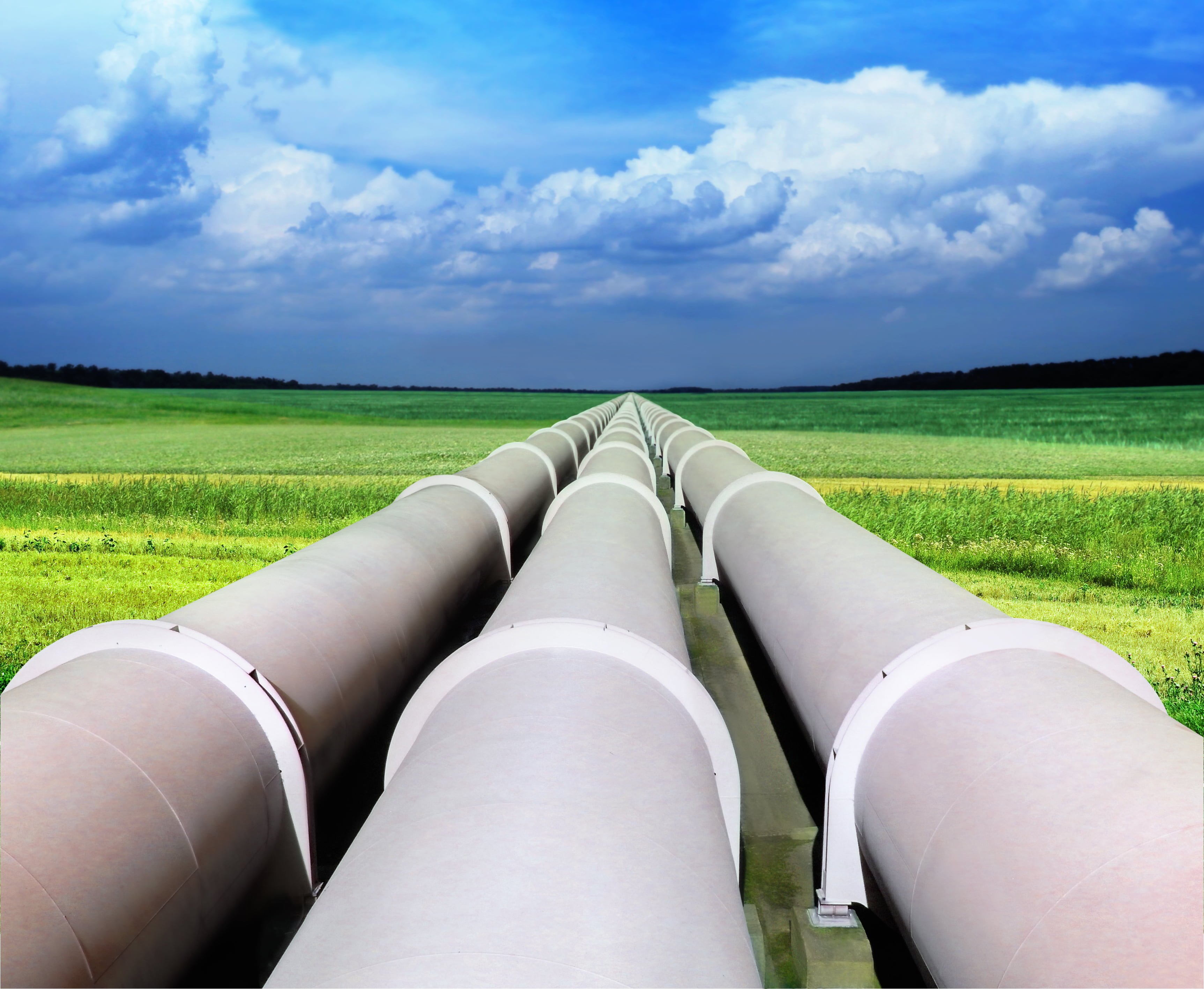
About biomethane
Biomethane – purified biogas – is a renewable alternative to natural gas. Its multiple applications include heat and power supply for our buildings and industries, and renewable fuel production for the transport sector.
About the EBA
The EBA fully believes in the future potential of renewable gas in Europe. Founded in February 2009, the association is committed to the deployment of sustainable biogas and biomethane production and use throughout the continent. EBA counts today on a well-established network of over 200 national organisations covering the whole biogas and biomethane value chain across Europe and beyond.
About the Sustainable Biomethane Initiative
The Sustainable Biomethane Initiative is a collaborative platform of companies and associations working to ensure the large, Europe-wide scale-up and use of sustainable biomethane. The platform is chaired by the EBA and supported by the energy transition consultancy, Common Futures.
Contact
Angela Sainz – EBA Communications Manager, +32 483 07 10 46 sainz@europeanbiogas.eu
The European Green Deal aims to reduce 55% of the greenhouse gas (GHG) emissions of the European Union by 2030. This directive would turn Europe into the first climate neutral continent. A swift decarbonisation of the EU economy is needed to reach that goal. This will require a deep transformation of our energy system to accommodate increasing shares of renewable and low-carbon energy sources, such as biomethane or hydrogen. This process will encompass all sectors of our economy, including transport, which is responsible for nearly a quarter of Europe’s GHG emissions.
The objective of this paper is to highlight the environmental advantages of the use of bio-LNG in the heavy duty (HD) transport and the maritime sector and its importance as the most readily available solution for the sectors’ decarbonisation. Additionally, it is crucial to underline the role bio-LNG will play in the future and the regulatory framework needed to support this sustainable fuel’s development. Current information regarding the existing bio-LNG/LNG market, the bio-LNG/LNG potential, needs of the sector, and political recommendations are herewith presented.
- Rapid scale up needed to achieve a biomethane production of at least 34 bcm before 2030.
- Clear political support will give investors confidence to support biomethane deployment.
- Biomethane produced in Europe is right now 30% cheaper than natural gas and can reduce EU energy dependency on external suppliers.
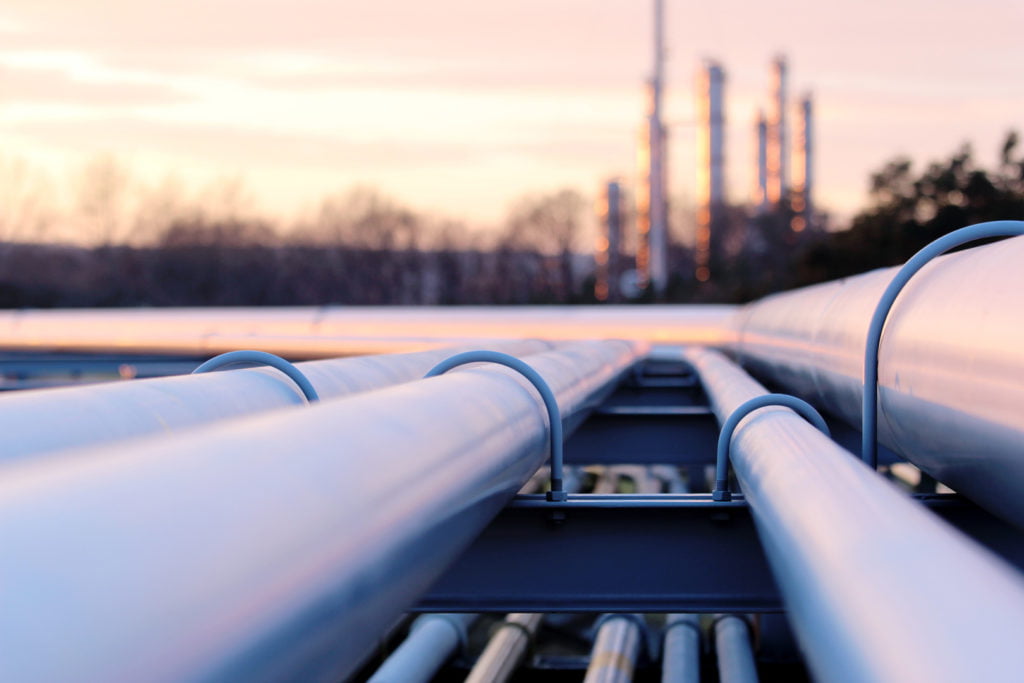
Brussels, 17 February 2022 – Today, the natural gas price stands at €80, compared to €18 a year ago. Prices for next winter are expected to remain at a similarly high level, according to current estimations. While governments are struggling to reduce the impact of soaring energy prices on citizens’ energy bills, they have a solution within reach: scaling up the production of sustainable biomethane.
Today, the price of biomethane can be 30% lower than the current natural gas pricing. Biomethane can be produced starting from €55/MWh, whereas natural gas costs around €80/MWh, without considering CO2 prices[1]. This renewable gas will likely remain cheaper than natural gas in the short and also in the long term. Whilst other renewable gases such as green hydrogen need time to scale up and are still 2-4 times more expensive, biomethane is available and scalable within the coming 8 years[2].
The rapid scale up of biomethane across Europe could provide at least 34 bcm of renewable gas by 2030 if underpinned by a supportive legislative framework. This represents approximately 10% of total EU gas demand by 2030. This potential is reflected in many recent reports from different sources, including the European Commission[3]. According to the EBA, if the growth trend continues, by 2050 the biomethane industry could cover 30-40% of the EU gas demand.
The deployment of biomethane made in Europe can help stabilize the current gas price increase related to disruptions of gas supply from third parties. There is an urgent need to reduce dependence on external gas suppliers, as the EU produces today less than 15% of its gas demand. The current conflict between Russia, Europe’s biggest gas supplier[4], and Ukraine, could exacerbate the energy crisis due to a shortage of gas supplies. Soaring gas prices are having a direct impact on the energy bill of millions of EU households. This situation is forcing national governments across Europe to invest billions of euros into measures to protect consumers[5].
Clear political support is needed to draw more investments into the sector and unlock the full potential of biomethane. The whole biomethane value chain is ready to boost biomethane production in the European continent. The European Biogas Association calls for a new public-private partnership to produce 40 bcm of biomethane by 2030. On top of the 34 bcm of sustainable biomethane by 2030, 6 bcm more can be produced in Ukraine. This would provide additional renewable gas supplies while supporting economic growth in that country. Biomethane can be transported through the existing gas grids, which reduces additional costs of infrastructure deployment.
“A strong sense of urgency is growing to secure investments and ensure the deployment of biomethane facilities across Europe. Additional partnerships, such as the recently launched Sustainable Biomethane Initiative, showcase the interest from industry users, producers and other major companies within the value chain, on the deployment of this renewable gas right now. Fostering the rapid scale up of biomethane means supporting climate change mitigation, reducing dependency on external gas supplies and dealing with an unprecedented natural gas price increase. A clear legislative framework will provide certainty for long-term investments on the roll out of sustainable biomethane.” Harmen Dekker, CEO of the EBA.
Contact
Angela Sainz – EBA Communications Manager, +32 483 07 10 46 sainz@europeanbiogas.eu
About the European Biogas Association (EBA)
The EBA is the voice of renewable gas in Europe. Founded in February 2009, the association is committed to the active promotion of the deployment of sustainable biogas and biomethane production and use throughout the continent. The association counts today on a well-established network representing the whole biogas and biomethane value chain.
[1] This means an additional amount of €18/MWh, as carbon price has reached €90/tonne. Users of fossil fuels under the EU Emissions Trading System (EU ETS), such as power plants, industry factories and certain areas of transport, are required to pay for each tonne of CO2 they release into the atmosphere.
[2] Green hydrogen costs EUR180/MWh today.
[3] https://climatecooperation.cn/wp-content/uploads/2019/06/com_2018_733_analysis_in_support_en_0.pdf
[4] https://www.bruegel.org/publications/datasets/european-natural-gas-imports/
[5] https://www.reuters.com/business/energy/europes-efforts-shield-households-soaring-energy-costs-2022-02-03/
The statistical office of the European Union (Eurostat) announced this week that the EU has met the target of 10% deployment of renewable energy in transport by 2020. The target was set to reduce greenhouse gas (GHG) emissions in the transport sector by promoting the use of renewable energy. The share of green energy in the EU mobility sector includes biomethane, liquid biofuels and renewable electricity. These renewable alternatives should benefit from relevant legislative support to make sure we continue reaching our GHG emissions reductions goals in the transport sector.
The EU transport sector relies heavily on fossil fuels and is responsible for one quarter of Europe’s GHG emissions, a share that keeps growing. In addition, the sector is a significant source of air pollution. Hence, the replacement of fossil fuels by renewable alternatives in transport is right now one of EU’s top priorities.
Eurostat data show that the average share of energy from renewables in transport increased from 1.6% in 2004 to 10.2% in 2020, slightly above the target level. This share includes renewable electricity, but also biomethane and liquid biofuels. It would be logical to think that all these solutions receive equal support to make sure that the share of renewable energy in transport continues growing.
Part of this support will come from the development of relevant legislation. However the focus on electricity only and the related tail pipe approach is leading to a stop on alternative fuels with equal or sometimes even better GHG footprint. Whilst we need to decarbonize as quickly as we can, we do not have the luxury to focus on only one fuel. All alternative fuels are needed and should be supported in relation to their total GHG footprint. Hence, proposed stops on production of combustion engine (ICE) cars from 2035 seems at first sight sensible. The focus should not be on the engine, but on the fuel used. Besides, ICE engines are more affordable for EU citizens.
The share of biomethane in transport is significantly higher than the share of green electricity. Data from NGVA Europe disclosed also this week shows that more than a quarter of the gas used in road transport today is renewable and 3,810 CNG stations delivered biomethane to European consumers in December 2020[1].
The role of biomethane in reducing emissions in the transport sector deserves more attention. Many studies confirm the incredibly high performance of this alternative to reduce emissions according to the lifecycle approach (LCA)[1]. The LCA approach considers all emissions released across the whole lifespan of the vehicles. The GHG emissions balance when using this green fuel can even be negative, meaning that the vehicle is not increasing the emissions but, instead, reducing them. However, the EU standard to measure CO2 emissions in the mobility sector proposed by EU legislation is focusing only on 1 part of the total emissions (tailpipe emissions) which gives a distorted picture of the emissions related to transport.
If we go back to Eurostat data, Sweden was the clear leader in the use of renewables in transport with a share of 31.9%. This leadership is explained, according to the EU statistical office, by the high use of compliant biofuels, including biomethane. The Swedish state provides investment support for sustainable biomethane production and refueling infrastructure. The government provides also end user incentives to stimulate the purchase of vehicles running on sustainable gas and has set out strict environmental zones in cities, allowing only low emission vehicles. They also apply long-term tax exemptions on biomethane, ensuring that vehicles are refueled with renewable and sustainable biomethane. This approach has resulted in a world leading biomethane share of 95%.
The data disclosed by Eurostat this week prove that there is not one single solution towards net-zero in transport and, consequently, support to all readily available solutions and technologies is crucial. This support should come in the form of a clear, coherent and technology-neutral legislative framework driving investments towards the large-scale development of all renewable alternatives contributing to clean mobility.
[1] https://www.ngva.eu/medias/2510-biocng-in-2020-new-data-proves-rapid-growth-of-biomethane-in-transport/
[1] https://www.europeanbiogas.eu/acknowledging-the-full-potential-of-biomethane-as-transport-fuel/
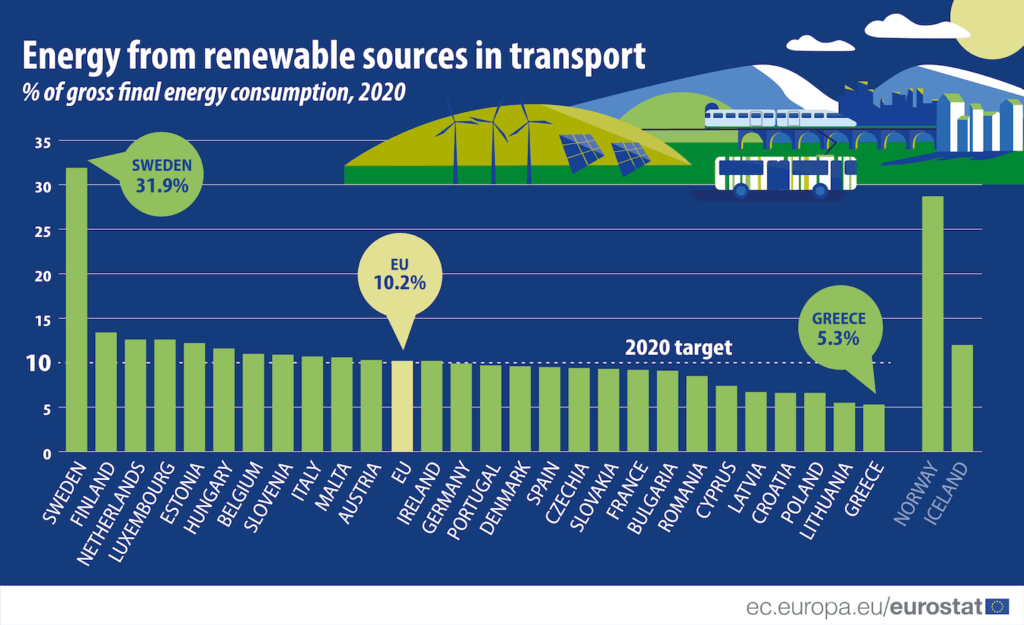
The biomethane industry smashed all records in 2021: Europe has now 1,023 production plants[1]. Considering the decarbonisation potential of biomethane, this figure is a steppingstone for the decarbonisation of the whole EU economy.
“2021 has witnessed the most exponential deployment of biomethane plants in Europe. Nothing surprising here considering what biomethane brings to table for decarbonisation: it is the only renewable fuel available and scalable today in Europe which can enable the cost-competitive use of already existing gas infrastructure. The combined amount of biomethane and biogas (raw form of biomethane) available today can cover already the whole gas consumption of Belgium[2]”
Boyana Achovski, GIE Secretary General.
“The EBA estimates that 87% of the biomethane plants active in Europe today are connected to the gas grid. To ensure that biomethane will play an increasingly important role as a renewable fuel, an efficient trade of biomethane across Europe should be established. Besides, the future development of gas infrastructure should consider the necessary adaptations to enable the injection of higher shares of biomethane in the distribution grids.” Harmen Dekker, EBA Director.
On its way to meet 1,000 TWh production by 2050
Today, Europe has around 20,000 units in operation (total number of biogas and biomethane plants). Sustainable biomethane can cover up to 30-40% of the EU gas consumption expected for 2050, with an estimated production of at least 1,000 TWh[3].Biomethane plants are exponentially growing across Europe: the Biomethane Map shows that almost 300 new units started operation in the past one and a half year. Europe has today 40% more biomethane plants compared to the previous edition released in 2020. The fast implementation of biomethane technologies will speed-up the decarbonisation of the EU economy. Yet, the sector will need relevant legislative support in the coming years to harness its full potential.
Biomethane deployment around Europe
France, Italy, and Denmark are the countries with the largest increase on the number of biomethane plants. No less than 91 new units began operation in France in 2020 and 123 plants started operation between January and October 2021. After France, the countries which saw the biggest growth in their number of biomethane plants are Italy (+11 plants in 2020) and Denmark (+ 10 plants in 2020).
Get your free map today
About this map
The Biomethane Map is the result of an ongoing collaboration between the EBA and GiE. This edition contains consolidated data from October 2021, although a few countries include only 2020 data. Further analysis on the biogas and biomethane markets can be found in the EBA statistical report 2021.
Press contacts
- Ángela Sainz Arnau
EBA Communications Manager – sainz@europeanbiogas.eu +32 483 07 10 46
- Gabrielle Lelievre
Communication Advisor – gabrielle.lelievre@gie.eu +32 478 78 34 83
About the EBA
The EBA is the voice of renewable gas in Europe. Founded in February 2009, the association is committed to the active promotion of the deployment of sustainable biogas and biomethane production and use throughout the continent. EBA counts today on a well-established network of over 200 national organisations, scientific institutes and companies from Europe and beyond.
About GIE
GIE is the association of the gas infrastructure operators of Europe active in transmission, underground storage, and LNG terminals. It represents around 70 member companies from 26 countries. GIE members work and innovate to become the backbone of the new innovative energy system, allowing European citizens to benefit from a secure, efficient, and sustainable energy supply.
[1] Of those, 994 plats were located by the EBA and displayed on this map.
[2] EBA Statistical Report 2021 https://www.europeanbiogas.eu/new-report-highlights-biomethane-ramp-up-and-best-pathways-for-full-renewable-gas-deployment/
[3] Gas Decarbonisation pathways 2020 – 2050, Gas for climate (2020)
Clarity and predictability key to stimulate renewable gas solutions
Brussels, 16 December 2021 – The European Commission has launched this week the long-awaited ‘EU framework to decarbonize gas markets’ to facilitate access of renewable and low-carbon gases to existing gas markets and infrastructure. The biogas industry welcomes the establishment of Europe-wide rules facilitating an accelerated, steep growth of biomethane integration in the gas network after 2025. This underpins the ultimate goal of the industry to achieve 1,700 TWh/y of biomethane production by 2050.
The EBA welcomes the integration of provisions setting-up the basis of a Europe-wide “right to inject” in gas networks for biomethane producers, but recalls that ensuring biomethane injection requires a strong commitment of grid operators to maximise firm capacity for this green gas. In other words, operators should guarantee the availability of biomethane in the grid. Additionally, biomethane injection should be based on the principles of priority connection and dispatch for decentralized producers, as well as on alleviating their costs for network connection. Biomethane producers should have access to tariff discounts for injection of renewable gases, and the proposal made by the European Commission in this regard (at least 75% discount at the entry points of the transmission and distribution system) is good step in this direction.
However, the biomethane industry believes there is a lack of clear signals to stimulate renewable and low carbon gas production. The EBA and other partners have been advocating for a GHG intensity reduction target of 20% of the gas supply by 2030 at EU level, compared to 2018. Such target would be an additional driver for renewable gases. It would contribute to predictability and confidence among the gas value chain and investors.
The EBA is concerned about the confusion that could create the inclusion of “biogas” in the legal definition of “natural gas”. The two are widely understood as different commodities. A clear differentiation between renewable and fossil gases is needed in the Directive and its national transposition, and, as a consequence, in documents disclosed to consumers by gas suppliers. As the Commissions states, consumers need to be able to clearly differentiate between the available gases and make low carbon choices.
The future development of gas infrastructure should adequately assess the increasing number of biomethane injection points at local level. Distribution system operators (DSO’s), responsible for delivering the renewable gas to the final consumers, will be key players in this decentralized energy system. This will also require higher coordination between DSOs and Transmission System Operators (TSOs), which manage the rest of the grid infrastructure. The EBA supports higher DSO’s involvement in the design of the National Development Plans (NDP), to ensure they reflect the potential of biomethane injection.
Additionally, the future development of the gas grids should consider the necessary adaptations to accommodate higher shares of biomethane. The reinforcement of gas networks, particularly DSO grids, will need additional investments, to reach also rural productions sites. Grid operators will have to build smart grids to be able to operate a 100% renewable gas system with different sort of gases and many injection points.
“The Gas Package is a positive step ensuring non-discriminatory access to the gas grid for biogas producers but we call for clearer and consistent definitions as well as for a higher ambition level in terms of actions securing reduction of greenhouse gas emissions and the required rapid uptake of renewable gases.” Harmen Dekker, Director of the European Biogas Association (EBA).
This comprehensive map locates and lists all known biomethane installations running in Europe. It has been produced with the information gathered from national biogas associations, energy agencies and companies.
The map provides specific details about each biomethane plant, including location, production capacity, start of operation and status of grid connection. The map also includes information on cross-border interconnection points, gas reserve areas and transport by pipeline.
The map brings additional data about the evolution of biomethane production in Europe and the percentage of biomethane plants connected to the distribution and transport grids.
This is the third edition of the map. It has been made in cooperation between two organisations promoting the development of renewable gases: the European Biogas Association (EBA) and Gas Infrastructure Europe (GIE). The second edition of the map was launched in June 2020.
- Download the online version
- On-demand printing and shipping
- Press release
- EBA Statistical Report 2021 includes updated data and statistics on the biogas and biomethane industries.
Brussels, 7 December 2021 – Today, 28 European companies and organisations presented the Biomethane Declaration to Kadri Simson, European Commissioner for Energy, in a lively online event.
The Declaration signatories recognise that biomethane is the most cost-effective, scalable and sustainable renewable gas available today. The declaration highlights the willingness of biomethane producers and users, with a combined annual turnover of around €300 billion, to play their part in scaling-up sustainable biomethane to at least 350 TWh by 2030, the potential estimated by the European Commission[1].
European Commissioner for Energy, Kadri Simson, accepted the Biomethane Declaration, highlighting that biomethane will be important to achieve climate neutrality, including for heating homes and for transport. Biomethane also boosts energy security according to the Commissioner, who also welcomed a continued dialogue on the future of biomethane in Europe.
The companies supporting the Biomethane Declaration are keen to work with national and EU policy makers and other stakeholders to scale-up biomethane in Europe, while ensuring full compliance with strict sustainability requirements and maximising benefits such as rural job creation.
The Biomethane Declaration can be accessed via: News – Gas for Climate 2050. For more information, please contact Harmen Dekker, coordinator of the Biomethane Declaration (dekker@europeanbiogas.eu, +31 6 5433 1782), or Angela Sainz (sainz@europeanbiogas.eu, +32 483071046)
[1] The European Commission estimated a biomethane potential of 30 Mtoe (350 TWh) by 2030 in the In-depth analysis supporting the Clean Planet for All Communication (2018)
Brussels, 29/11/2021 – The DiBiCoo EU project has launched an online platform to connect European technology providers with partners developing biogas projects in emerging countries, easily and without costs. Global leaders have committed to deploy higher shares of renewable energy, including biogas, in their countries as one of the measures to fight climate change during COP26. Europe is one of the biggest biogas producers worldwide. It has developed in the past decades valuable know-how and cutting-edge biogas technologies which can support the deployment of higher shares of renewable energy in Europe and beyond.
The Biogas and Gasification Matchmaking Platform can be used free of charge and serves to build successful and sustainable international business relationships. Innovative ideas from local project developers can use the networking platform to find suitable business partners for project realisation quickly, easily and under fair market conditions. European technology providers can expand their business and find interesting projects outside EU borders. Interested companies can create a dedicated profile, look for business opportunities, engage with other stakeholders active within the platform or download valuable reports and other materials about the sector. “This tool connects with one click technology providers and project developers around the globe, helping them save time and resources and supporting the further deployment of biogas and the energy transition at global scale.” Highlights Harmen Dekker, Director of the EBA.
In the past year, research undertaken within the DiBiCoo consortium identified technology and service needs for efficient and sustainable biogas production in different emerging countries which have considerable feedstock potential to produce this green gas. The partners also analysed the challenges and opportunities for the exportation of European biogas technologies and services. DiBiCoo successfully connects already 13 organisations from Europe, Argentina, Ethiopia, Ghana, Indonesia and South Africa. The consortium envisages to expand this cooperation to other areas at global level. For this reason, the platform launched today will remain online beyond the finalization of the project with the support of the EBA and the German Biogas Association.
In order to support emerging countries in the deployment of biogas, experts from the DiBiCoo consortium have also analysed more than 50 biogas projects worldwide. The top five technically and economically promising projects can now be found in the platform and will receive advisory support in the implementation of their goals with the help of individual feasibility studies, advancing in their region as best-practice examples on a demonstration scale.
In Ethiopia, for example, DiBiCoo is supporting a collaborative project between Bahir Dar University and Lake Tana and other Waterbodies Protection and Development Agency. The project uses invasive water hyacinths from the water body as a co-substrate in anaerobic digestion to produce biogas. This will not only generate electricity sustainably for local power supply (1,600 kWe), but will also protect the natural biodiversity of the lake.
Other project developers use municipal or industrial waste, such as organic fractions, thin stillage and process waste water, to generate power, which is mainly used locally for self-supply of electricity. Biomethane itself can also be used and distributed directly by feeding it into local gas grids in other cases. A comprehensive overview of the demonstration projects and the selection process can be found on the project website: dibicoo.org.
Biogas can be converted into electricity, heat, gas or fuel.It therefore plays an essential role in the phase out of fossil fuels and the transformation of our energy systems and our economies at global level. This is in line with the COP26 climate negotiations, but also with the Sustainable Development Goals of the United Nations (UN), which include the promotion of “affordable and clean energy“. The matchmaking platform provides unique digital infrastructure to continue improving cooperation for the deployment of biogas and is thus a prerequisite for successful future renewable energy projects all over the world.
CONTACT
Angela Sainz Arnau : sainz@europeanbiogas.eu
EBA Communications Manager
About DiBiCoo
This EU project facilitates collaboration between European biogas industries & stakeholders from emerging and developing markets through the development and application of innovative digital and non-digital support tools, knowledge transfer and capacity building.
Brussels, 25 November 2021 – By 2050, 30 to 40 % of Europe’s total gas consumption could be made up of sustainable biomethane, according to the 11th edition of the Statistical Report launched today by the European Biogas Association. The report provides an in-depth analysis on the state of the art and the potential of biogas and its upgraded form, biomethane, and the best pathways to ensure full deployment in the coming years as part of the future energy mix.
The EBA Statistical Report analyses the current availability of renewable gases in Europe, notably biogas and biomethane. Combined biogas and biomethane production in 2020 amounted to 191 TWh or 18.0 bcm of energy and this figure is expected to double in the next 9 years. By 2050, production can be at least fivefold reaching over 1,000 TWh, with some estimates going up to 1,700 TWh. Agriculture-based biogas and biomethane plants make up the lion’s share of the total production, which is now already more than the entire natural gas consumption of Belgium and represents 4.6 % of the gas consumption of the European Union. In terms of job creation, the report shows that biogas and biomethane industries are already responsible for over 210,000 green jobs today. Both sectors combined can be expected to create a total of approximately 420,000 jobs by 2030 and over one million jobs by 2050. The report highlights the needed collaboration as well between the biomethane and the other potential major renewable gases, such as green hydrogen in future years.
Over the last decade, the delivery of dispatchable power and heat from biogas has been very important and its role will continue to some extent. However, the current trend places the emphasis squarely on sustainable biomethane production, and it is expected that this tendency will be amplified in the coming decade: biomethane is a versatile energy carrier, suitable for a range of sectors, including transport, industry, power and heating. 2020 saw the biggest year on year increase in biomethane production so far in spite of the pandemic, with an additional 6.4 TWh or 0.6 bcm of biomethane produced in Europe. An even bigger increase is to be expected in 2021, as a record number of new biomethane plants started production in 2020 and are due to become fully operational within 2021.
The remaining future gas demand can be met by other renewable and low-carbon solutions such as green hydrogen. The development of synergies between green gases will be key to meeting future gas market demands. In line with this, the report highlights the need to develop a vision of how biomethane and hydrogen will integrate with each other in the future. Future infrastructure investments should aim to strengthen the distribution of renewable gases by considering the specific requirements of each gas as well as their most suitable deployment.
The report points out as well a clear tendence towards the increasing use of sustainable feedstocks for biogas and biomethane production. These include mostly industrial waste, municipal waste or agricultural residues. It is also expected that the remaining energy crops to produce biogas will be replaced
by sustainable cropping, for example with the introduction of sequential cropping systems which at the same time allows for carbon farming and revitalization of the soil.
The contribution to sustainability is one of the benefits of biogas and biomethane production for our society, but there are many others. As the EBA report points out, a solid calculation of the economic value of the wider benefits of biogas and biomethane is needed, so that the revenue channels for biogas and biomethane producers can be diversified. The translation of these societal benefits into market signals would allow biogas and biomethane production to compete on fairer terms with other types of energy supply while at the same time further stimulating production plants to achieve the highest levels of societal benefit.
In terms of use by sectors, the need for decarbonization of all transport modes will be especially relevant for the coming years and thus the need for further renewable gas uptake in that sector. According to the report launched today, the sustainable European Bio-LNG (liquified biomethane) production capacity by 2024, considering only confirmed plants, adds up to 10.6 TWh per year. This projected 2024 production capacity could fuel almost 25,000 LNG trucks for the whole year.
“Today, the EU is 90% dependent on imported fossil gas. The EBA Statistical Report 2021 highlights best possible pathways to accelerate sustainable renewable gas deployment and ensure we are on track to meet climate-neutrality by 2050, making use of all possible solutions within our reach” States EBA Director Harmen Dekker.
The EBA Statistical Report has become a reference publication, engaging with policymakers, market developers, investors and consumers across Europe. The 11th edition includes new and more detailed country insights and forecasts for the years to come, as well as specific chapters on transport and job creation. The publication is available for purchase on the EBA website. The report will be presented in a dedicated webinar next Tuesday.
Contact
Angela Sainz Arnau – EBA Communications Manager sainz@europeanbiogas.eu
Vinciane Perot (sales Statistical Report): perot@europeanbiogas.eu
Find out more with the EBA Technical and Project Manager Mieke Decorte.
The 11th edition of the EBA Statistical Report serves as a reference document and is the most comprehensive report covering the European biogas and biomethane market, both on a European level and at a national level in the specific county analyses. The report is the result of a decade long collaboration between the EBA and its national associations, and contains the combined knowledge of the EBA’s extensive network of members active in the European biogas and biomethane markets.
You can download here an excerpt of the publication. The full report is free for EBA members and is available for purchase to external organisations. Please contact Vinciane Perot for further inquiries at: perot@europeanbiogas.eu
Find out more with the EBA Technical and Project Manager Mieke Decorte.
Biogas sector presents first overview of European technologies to boost deployment of renewable gas as global leaders discuss climate goals at COP26
The publication is part of the DiBiCoo EU project, aimed at connecting biogas technology providers in Europe with biogas projects developed outside EU borders
Brussels 9 November 2021 – The European Biogas Association (EBA) is launching the first comprehensive categorization of European Biogas and Gasification Technologies, aimed at giving visibility to high-quality European products and services from the biogas sector. Global leaders are now discussing the next steps in the climate agenda at the COP26 summit and the urgent need for deep and sustained reductions of greenhouse gas emissions. The EU biogas sector is strongly committed with climate-neutrality and is ready to deploy increased shares of renewable gas, supported by recognised technology applications and services.
The sector is well developed in Europe and is ready to scale-up. According to data from the European Biogas Association, the combined production of biogas and its upgraded from, biomethane, could cover today 4.6% of the whole EU gas demand. By 2050, about 30-40 % of EU gas needs can be met by biogas/biomethane. As one of the global leaders in biogas production, European producers are now seeking new ways for cooperation with third countries to support the deployment of biogas outside EU borders.
The EBA, together with the German Biogas Association (FvB) and the Austrian Compost and Biogas Association, are already working on this direction in the framework of the DiBiCoo EU Project. One of the fruits of this cooperation is the Categorization of European Biogas and Gasification Technologies presented today. The overview is divided in 2 different publications, one dedicated to anaerobic digestion (AD) and the other one focused on gasification. These guides are intended as a solid starting point in learning about anaerobic digestion and gasification.
After the introductory section about Anaerobic Digestion (AD), the first publication follows the logic of the biogas production process, progressing from on-site feedstock storage options and pre-treatment requirements to the various digester technologies. Special, detailed chapters are included on issues of particular relevance for all biogas plants (including, for example, a chapter on measurement, control and regulation technologies). The upgrading of biogas to biomethane quality is introduced, along with other biogas applications, such as its GHG mitigation potential and use in Combined Heat & Power (CHP) plants.
The second publication, tackling gasification, provides an introductory section on biomass conversion processes. The text follows the logic of the wood gas production process, progressing from the various gasifier technologies to feedstock specifics, storage, and necessary pre-treatment. Special, detailed chapters on issues of particular relevance for all gasification plants are included (e.g. on measurement, control and regulation technologies).
The deployment of renewable energy, including biogas, to reduce greenhouse gas emissions at global level is urgent. Global cooperation in the framework of projects such as DiBiCoo is essential to speed-up this process with the implementation of new renewable energy projects, ensuring the best possible future for our next generations. The value of biogas is heightened in scenarios such as the IEA Sustainable Development Scenario (SDS), which meet in full the world’s goals to tackle climate change, improve air quality and provide access to modern energy.
• DOWNLOAD CATEGORIZATION OF EUROPEAN BIOGAS TECHNOLOGIES
• DOWNLOAD CATEGORIZATION OF EUROPEAN GASIFICATION TECHNOLOGIES
CONTACT
Angela Sainz Arnau : sainz@europeanbiogas.eu +32 2 400 10 89
EBA Communications Manager
Opening speech from VP Timmermans’ Cabinet points out the EU need to move away from fossil gas and bring in renewable and low carbon gases.
Biomethane is ready to decabonise our transport, industry and buildings: 30-40 % of our gas needs can be met by biogas/biomethane by 2050.
Increased share of sustainable feedstocks and contribution to the circular bioeconomy on the spotlight in the sessions of this edition.
Brussels 4 November 2021 – The European Biogas Conference 2021 was held last week with great success. Over 200 participants and more than 40 speakers gathered in Brussels on 26 to 27 October the latest developments of renewable gases in Europe. The EU is at the forefront of the low carbon agenda setting the global pace and with the ‘Fit for 55’ package it has provided the regulatory context to move forward. Inspiring interventions and discussions tackled the availability, sustainability and scalability of biogas and its upgraded form, biomethane, in Europe, and how these green gases are making the transition towards a climate-neutral Europe a reality. The conference was also the official launch of the new visual identity of the European Biogas Association, more in line with the current positioning of the sector at the core of our future energy system and with its commitment to shape our circular bioeconomy.
Alexandra Tomczak member of the cabinet of the European Commission Vice-President Frans Timmermans, stressed during the opening the need to “move away from fossil gas and bring in renewable and low carbon gases, such as hydrogen, biogas and biomethane.” and “think about the long-term resilience of the energy system” where “any substitutes for imported fossil gas and more investments in renewable energy will be our strategy to go forward.”
The figures from the EBA Statistical Report, with the 2021 edition foreseen end of this month, are encouraging: there is a massive growth of biomethane from 2019 to 2020 and the future forecasts are equally promising, as highlighted by Harmen Dekker, EBA Director, during his keynote intervention. The combined production of biogas and biomethane could cover today 4.6% of the whole EU gas demand. This is already higher than the overall natural gas consumption in Belgium. By 2050, about 30-40 % of our gas needs can be met by biogas/biomethane. Fostered collaboration and a supportive regulatory framework, will be crucial in ensuring the scale-up of the sector. One of the areas where biomethane can play an important role is transport. The forecasted production of bioLNG for 2024 (liquified biomethane) could fuel more than 25,000 long haul heavy-duty trucks, decreasing emissions from those vehicles below zero levels.
There is no silver bullet for our energy challenges. There is room for different solutions. This conference brilliantly showcased from multiple perspectives on how biogas and biomethane are a solution for the decarbonisation of many sectors (industry, transport, buildings). It also demonstrated how biogas and biomethane are contributing to shape our circular bioeconomy. As summarised by one of the conference speakers, “Waste from 1000 citizens can power biogas for a bus for 1 year and create 1-3 jobs”, delivering renewable energy, clean transport, waste reduction and green employment.
As stressed by Pierre Bascou (Director of ‘Sustainability and income support’, at the European Commission Directorate General for Agriculture) during the opening of the 2nd day of the conference, biogas production contributes to reducing emissions in agriculture, while generating other benefits: “It creates additional income streams for the farming community (…), it delivers heat and electricity in areas not directly connected to national distribution infrastructure, therefore enforcing EU energy security. It also contributes to the deployment of low-value added products of the agriculture and food processing sectors, valorising waste and replacing mineral fertilisers, (…) ensuring there’s no deterioration in soil fertility.”
This edition has also put on the spotlight the use of sustainable and innovative feedstocks for biogas production, including the presentation of a brand new report on the use of sequential cropping or the potential of industrial wastewater. The adequate monitoring and prevention of methane leakages was also discussed in a dedicated session during the conference. This is part of the need to continue fostering innovation and investing on new techniques to strengthen the efficiency and the sustainability of the sector. One of the new applications explored in that framework is the recovery of CO2 from biomethane upgrading.
The European Biogas Conference was also the occasion to recognise outstanding individuals and projects committed with the energy transition and the deployment of a truly circular economy. The winners of the 1st edition of the EBA Awards were announced during the gala dinner: Prodeval (Biogas Cost Reductions Award), Cooperativa Speranza (Biogas Circularity Award), Marie Esteve (Women leading the way to climate-neutrality Award), Emilio Folli (Top Biogas Young Talent Award). Harm Grobrügge, former EBA President who passed away only some weeks ago, was honored with the Biogas Booster award, which will from now on bear his name. Participants had also the opportunity to visit the stands of some of the key stakeholders working on the industry (SHV Energy, bmp greengas, BIOTHANE-VEOLIA, Bayotech, APROVIS, IES Biogas and SeekOps) or explore our LNG truck, ready to run on bioLNG and support the decarbonization of heavy-duty transport in Europe.
The following document provides an overview of existing European gasification technologies and the main gasification processes.
After the introductory section on biomass conversion processes, the text follows the logic of the wood gas production process, progressing from the various gasifier technologies to feedstock specifics, storage, and necessary pre-treatment. Special, detailed chapters on issues of particular relevance for all gasification plants are included (e.g. on measurement, control and regulation technologies).
Due to the amount of existing information available on this topic, it may be the case that not everything is included or considered extensively. This document is intended as a solid starting point in learning about gasification. It cannot replace specialised training courses or professional planning. Some additional technologies and applications relevant for gasification have already been outlined in the document ‘Overview and Categorisation of European Biogas
Technologies focusing on Anaerobic Digestion’.
The detailed descriptions of certain technologies do not imply any preference for a specific technology, service provider or device. Similarly, pictures showing company names are included for visualisation purposes only and should not be seen as an endorsement of any specific company or technology.
The following document provides an overview of existing European biogas technologies.
After the introductory section about Anaerobic Digestion (AD), the text follows the logic of the biogas production process, progressing from on-site feedstock storage options and pre-treatment requirements to the various digester technologies. Special, detailed chapters are included on issues of particular relevance for all biogas plants (including, for example, a chapter on measurement, control and regulation technologies). The upgrading of biogas to biomethane quality is introduced, along with other biogas applications, such as its GHG mitigation potential and use in Combined Heat & Power (CHP) plants.
Due to the huge amount of existing information available on this topic, it may be the case that not everything is included or considered extensively here. This guide is intended as a solid starting point in learning about anaerobic digestion; it cannot replace specialised training courses or professional planning.
The detailed descriptions of certain technologies do not imply any preference for a particular technology, service provider or device. Similarly, pictures showing company names are included for visualisation purposes only and should not be seen as an endorsement of any specific company or technology.
- Today, the EU is 90% dependent on imported fossil gas and has no significant support to ensure fast deployment of renewable gases
- Security of gas supply should be based on growing shares of green gas and affordable prices for consumers

Brussels, 11 October 2021 – The EU is fully immersed in an energy transition to reduce GHG emissions and increase the use of clean energy sources, which includes phasing out coal and aging nuclear plants. The share of renewable electricity is raising. However, according to the European Commission, we are still 90% dependent on imported fossil gas. There isn’t enough gas to fuel our homes and industries in the post-pandemic recovery and refill stocks before the winter. The EU should seize this opportunity to push for the deployment of higher shares of already available renewable gas produced within EU borders, such as biomethane.
According to Bloomberg News, European gas prices surged by almost 500% in the past year. This sharp raise is due to an increase of global gas demand and unsecure supply from third countries. The current situation may undermine efforts by governments to hit ambitious green goals if they are obliged to turn to coal in order to face demand shortages in their countries: gas emits about half as much carbon dioxide as coal when burned. At the same time, it is resulting in ever higher energy bills for citizens and industries across the continent, already economically hit by the COVID pandemic. We need to make sure that the energy transition will leave no consumers behind.
The European Commission is preparing an official communication to help member states palliate the crisis and protect consumers. The measures and proposals that the EU Executive will soon layout to address the energy crunch should push for targeted support for renewable gas production, demand and infrastructure to boost reliance on clean and locally produced energy sources. The EU has already committed to reduce GHG emissions by at least 55% by 2030. Denmark, for instance, is close to reach 25% of biomethane injected into the natural gas grid and an additional 5% consumed directly. Heading for higher levels as new production starts! . The Commission has urged governments to coordinate their national measures to lower energy prices avoiding contradictions with EU climate goals. However, the energy mix across the bloc varies significantly, with some Member States enjoying advanced renewable systems while others still highly dependent on fossil fuels, the majority of which come from non-EU exporters.
Within the mix of renewable gases, biomethane is scalable already today and its role in the short and long run should be better assessed in the framework of the European Green Deal. Studies from IEA, Gas for Climate, Eurogas, Cerre or CE Delft evaluating the potential of biomethane, believe that this renewable gas could cover 30-40% of the gas demand in Europe by 2050. Currently, the sector is producing 18 bcm of energy, which is mostly allocated to electricity production although the sustainable biomethane production from biogas is growing within Europe. By the end of this decade, the localized production of biomethane is expected to double and eventually reach 120 bcm by 2050, EU’s deadline to reach climate-neutrality.
The environmental performance of sustainable biomethane is also promising, as it can reduce GHG emissions below zero levels. Besides, as it is produced from organic residues, it helps reduce industrial and municipal waste. Additionally, biomethane supports the development of the agroecology by using sustainable farming feedstocks and promoting the use of digestate, a by-product of biomethane production, as biofertilizer, contributing thereby to a circular bio-economy.
“We need EU-wide action to ensure all consumers can afford their energy bills while increasing the share of renewable gas in our grids. This will lower our dependency on imported gas and strengthen environmental and local development.”
Harmen Dekker, Director of the EBA.
-
The Life Cycle Assessment is the only means to ensure that CO2 emissions in the transport sector are accurately and comprehensively quantified.
-
Compliance assessments for vehicle manufacturers should consider the contribution of biomethane to emissions reduction.
-
Legislation should introduce a binding obligation to increase the share of sustainably produced biofuels and renewable gases in transport.
Brussels 3 June 2021 – The European biomethane industry has launched today in the framework of the EU Green Week 2021 the paper ‘Smart CO2 standards for negative emissions mobility’, which includes three key recommendations to ensure the deployment of biomethane in transport and consequently achieve a fast, cost effective shift to carbon neutral mobility in Europe by 2050.
Emissions from transport will need to be reduced by 90% relative to 1990. According to the current trends, the transport sector will fail to contribute to the reduction in emissions required to meet EU targets. To ensure the full decarbonisation of the transport sector, Europe needs to couple electrification with the deployment of all alternative fuels and technologies.
The biomethane industry welcomes the gradual replacement of fossil fuels in the transport sector, but the replacement of these fuels should not penalise the technology they use. Internal combustion engines (ICE) are compatible with renewable fuels, including biomethane. Just as renewable electricity is compatible with the same batteries that are now mostly powered by electricity from fossil origin.
The current standards have adopted an approach to measure the emissions performance of the vehicles that considers only the CO2 emissions produced by the use of the vehicles (Tank-to-Wheel), instead of considering the emissions produced across its whole lifecycle. This penalises the deployment of ICE. However, this technology is already more performant when used with fossil gas than diesel or gasoline alternatives, and high performing when used with biomethane (bio-CNG or bio-LNG[1]).
The environmental performance of biomethane over its complete lifecycle is excellent and has been scientifically proved in different studies, as demonstrated in this paper. Biomethane vehicles can reach even negative emission levels depending on the feedstock and technology used, but this is not recognised by the current regulation.
The updating of the CO2 emission performance standards together with other legal frameworks (e.g. RED III or DAFI) must set out a harmonised approach that enables genuinely carbon neutral and cost-effective solutions to reduce CO2 emissions in transport. Eventually, this should lead to the adoption of a Life Cycle Assessment (LCA) approach in EU vehicle legislation.
Manufacturing and recycling can represent anything from one fourth to one half of the total vehicle emissions, but are entirely omitted from the current standards. Life Cycle Assessment is the only means to ensure that CO2 emissions in the transport sector are accurately and comprehensively quantified. Considering only tailpipe emissions leaves 93% (54 tonnes/58 tonnes) of transport sector carbon emissions out of the calculation[2].
The CO2 emission standards should also include a new mechanism ensuring that compliance assessments for vehicle manufacturers consider the contribution of biomethane to emissions reduction. This mechanism could take the form of a crediting system or a carbon correction factor (CCF) as a function of the renewable fuel used. If a new mechanism cannot be implemented by 2025 at the latest, then the most efficient gas vehicles should be acknowledged as low emission vehicles within the current system.
The decarbonisation of transport could also be encouraged with a binding obligation for the EU to steadily increase the share of sustainably produced biofuels and renewable gases in transport, reaching 50% in ICE and hybrid vehicles by 2030 and 100% by 2050.
The sustainable production of biomethane for the coming years is large. There is a consensus that by 2030, the biogas and biomethane sectors combined can almost double their production and by 2050, production can more than quadruple. This is equivalent to 100 million passenger vehicles or 2.5 to 5 million heavy duty vehicles (HDV), depending on the type of HDV considered.
The benefits of the use of biomethane for clean mobility go far beyond the transport sector. Biomethane is at the heart of an efficient circular economy: it is the best way to recycle organic waste, produce valuable renewable gas and biofertilisers, promote sustainable and efficient farming practices and create jobs in rural areas. The potential of biogas and biomethane was also pointed out in the recent Farm-to-Fork and Methane strategies of the European Commission.
- DOWNLOAD PAPER ‘Smart CO2 standards for negative emissions mobility’
- DOWNLOAD PRESS RELEASE
[1] Compressed biomethane or liquified biomethane.
[2] Volvo_carbonfootprintreport.pdf (volvocars.com)
This paper includes three key recommendations to ensure the deployment of biomethane in transport and consequently achieve a fast, cost effective shift to carbon neutral mobility in Europe by 2050.
To achieve a climate-neutral EU by 2050 and the intermediate target of at least 55% net reduction in greenhouse gas emissions by 2030, the Commission is preparing a revision of the CO2 emission performance standards for new passenger cars and vans as part of the ‘Fit for 55%’ package. National projections indicate that by 2030, greenhouse gas (GHG) emissions from transport will decrease slightly but will nevertheless remain higher than 1990 levels. If these trends continue, the transport sector will fail to contribute to the reduction in emissions which is required in order to meet EU targets. To ensure the full decarbonisation of the transport sector, Europe needs to couple electrification with the deployment of all alternative fuels and technologies; the current standards, however, are placing obstacles in the way of a fast, cost effective shift to carbon neutral mobility in Europe.
Biomethane, which is the upgraded form of biogas, can be used as a renewable fuel, helping us achieve zero or even negative levels of CO2 emissions. It also enables the development of local circular economies because it can be generated using locally-produced organic residues. Additionally, digestate, a nutrient-rich by-product obtained during the production of this renewable fuel, can be used as biofertiliser to nurture our soils. Biomethane is available right here and now, across Europe, and its production levels can be easily increased to ensure ample future supply.
The need for further action to reduce emissions in the transport sector must be addressed without delay. The development of green electric mobility is advancing but this alone will not deliver the aimed for and much needed decarbonisation in time and cannot cover all areas of transport. In addition, as confirmed by the International Energy Agency (IEA), ‘the sustainability of electrification depends on broad decarbonisation of the power sector to actually reduce emissions at the system level’1. The use of other alternative green fuels alongside green electric mobility can speed up transport decarbonisation in the coming years and make sure the socio-economic benefits of this transition remain in the EU, including by supporting the development of a resilient car industry. Biomethane is a readily available and scalable resource that has an important role to play in ensuring that emissions reduction goals are met.
7 May 2021 – The Low Carbon and Circular Economy Business Action (LCBA) in Argentina, Brazil, Chile and Colombia has launched two initiatives in order to connect European greentech providers with projects seeking energy efficiency, circular economy and low carbon solutions in Latin America.
Biogas and biomethane technologies to produce electricity and heat are still untapped in most of Latin American countries. According to IRENA, biomass and wind are the renewable energy sources with highest growing potential in the coming years, playing a key role for the decarbonization of the energy sector in the region.
Initial country assessment carried out by the LCBA team has identified technology needs and gaps in the field of biogas and biomethane that could be met by EU suppliers. Among main technological solutions demanded, it is worthy to highlight the following:
– Eengineering and installation services
– Biodigesters
– Inverters
– CHP motors
– Pumps, filters and membranes
In order to bridge those gaps, the LCBA Latam is launching the following initiatives to enhance business partnerships between both parties and support them through the process.
1) CALL FOR EXPRESSION OF INTEREST with 15 selected business opportunities, ready for European SMEs and Mid-Caps to apply. More info here.
2) FIRST MATCHMAKIGN EVENTS in Argentina, Brazil and Colombia to connect technology suppliers with local projects in virtual B2B meetings. Register here.
Let’s not miss the train!
2021 is the European Year of Rail, one of the most sustainable transport modes we have. Compared to other options, rail is performing very well: in the EU, transport is responsible for 25% of greenhouse gas emissions, but only 0.5% belong to rail transport. This makes it one of the most sustainable forms of passenger and freight transport. However, only about 7% of passengers and 11% of goods travel by rail.
During 2021, EU institutions will work to encourage its citizens and industries to look at the advantages of this sustainable transport mode as part of the Green Deal efforts to reduce transport emissions by 90%. The Commission’s legislative agenda will include proposals on a new rail industrial partnership, better links for rail with other modes of transport, and making freight transport more sustainable.
In a previous article, we analysed the contribution of biomethane (upgraded biogas) to decarbonize maritime transport. This month, we will look at the applications of BioNGV (bio-Natural Gas for Vehicles) in the railway world, particularly in passenger transport.
A recent study by Sia Partners proposes the implementation of TER (Express Regional Transport) sector based on a BioNGV fleet in France. This would support the deffosilisation of the TER sector. The current fleet of 930 TER railcars running on diesel would be replaced by a sustainable alternative. These railcars make it possible to serve the smallest service lines and isolated stations of the territory, where electrification would represent a significant cost.
The study has evaluated the feasibility of this transition and the impact of this change in reducing greenhouse gas emissions. Between 33% and 70% of the fleet could be composed by BioNGV by 2030. A shift of 61% of the fleet to BioNGV could lead to a reduction of 175,000 t / year of CO2 emissions. This is the equivalent to the amount of emissions produced by 38,000 passenger vehicles fueled with gasoline every year.
The development of sustainable transport brings environmental benefits but also social opportunities, notably green jobs for our bio-economy. According to the same study, the establishment of such sector in France would represent 15,200 long-term jobs by 2030. This figure considers the operation and maintenance of TER, but also on BioNGV refueling stations and biomethane production units. 2,100 non-sustainable jobs would also be generated over the year 2030 to finalize the implementation of the sector (transformation of TERs into BioNGV, construction of BioNGV refueling stations and construction of anaerobic digestion units). A total of 16,750 jobs would therefore be created by 2030.
Finally, the replacement of diesel trains by a BioNGV fleet would be more efficient in terms of costs. BioNGV are less expensive because they consume less fuel. Up to 55% of the costs related to fuel consumption can be avoided, which represents 65,000 euros per year for a TER traveling 100,000 km per year. According to Sia Partners, this increased profitability could support, indirectly, the maintenance of TER lines in rural communities in France.
Reaching the CO2 emissions reduction targets involves replacing fossil fuels in all transport modes, whether by converting the engines or renewing the fleet. This study proves, as other previously mentioned by the EBA, that the deployment of BioNGV with the adaptation of the already existing infrastructure appears to be a relevant short-term and low-cost solution to meet these objectives.
A cost-effective and swift decarbonisation of transport will be only feasible with the deployment of all renewable technologies to drastically reduce emissions by 90% in 2050.
This workshop will explore the opportunities of biomethane as one of the most climate-friendly fuels currently available to reach even below zero emissions mobility. Biomethane belongs to the most promising alternative fuels to decarbonise transport in a swift and cost-competitive way, leaving no one behind.
The current standards to measure CO2 emissions released in the transport sector promote the development of green electricity, but hinder the deployment of other sustainable fuels and vehicles. Lack of policy support will put at risk the scale-up of the industry and the achievement of climate goals.
This webinar will discuss how to overcome the existing barriers to unlock the potential of biomethane in transport and reach EU’s zero pollution ambition in this sector. It will also zoom into the opportunities of this green fuel to decarbonise different transport modes.
WHO SHOULD ATTEND THIS WEBINAR?
This event is held in the framework of the EU Green Week and is open to all audiences, including:
- Biomethane producers.
- Developers of cutting-edge technologies to reduce GHG emissions in transport.
- Vehicle manufacturers.
- Logistic companies heavily relying on transport solutions to deliver their goods.
- EU, national, regional or local policymakers working on the decarbonization of the transport sector.
- Other EU organisations advocating for the use of renewable and low carbon fuels in transport.
- EU citizens, as transport users and consumers of goods delivered by different transport modes.
REGISTRATION
Register for free via this link.
PROGRAMME
Check the preliminary programme here.
We are pleased to invite you to join to the online webinar ‘Enabling a Circular Economy: How to encourage a viable agricultural market for nutrients recovered from biowaste’ on 27 May during the EU Green Week. EBA is supporting the organisation of this event as partner of the Systemic project.
Recovering valuable nutrients from biowaste (food waste, manure, sewage sludge, municipal waste etc.) and adapting them for reuse in agriculture, is fundamental part of shifting European agriculture away from its current linear model and an integral part of the New Circular Economy Action plan.
Experience from the H2020 SYSTEMIC project has shown that the major barrier to the uptake of nutrient recovery and reuse (NRR) is the lack of a market for the recovered products, thereby hindering the financial viability of nutrient recovery and reuse in Europe.
Much progress has taken place over the past months to move this agenda forward, most notably the SAFEMANURE study and RENURE report linked to the Nitrates Directive, the Fertilising Products Regulation and most recently, the Green Deal. And whilst there remains much work to do on both these policies, things are moving in the right direction. However, this will not be enough.
In this workshop, the H2020 project SYSTEMIC aims to bring together experts and practitioners in the field of nutrient recovery and reuse with policy makers to discuss what else needs to be done to create an enabling policy framework for the advancement of NRR in Europe.
SYSTEMIC receives funding from the European Union’s Horizon 2020 Framework Programme for Research and Innovation under Grant Agreement no. 730400
PROGRAMME
- Oscar SCHOUMANS, Coordinator of SYSTEMIC, Wageningen University and Research
- William NEALE, European Commission DG Environment, Advisor, Circular Economy and Green Growth
- Jan HUITEMA, MEP, Renew Europe and Rapporteur for New Circular Economy Action Plan
- European Commission DG Research and Innovation – Speaker TBC
- Ludwig HERMANN, Member of SYSTEMIC, Proman
- Moderation: Annabelle WILLIAMS, Member of SYSTEMIC, RISE Foundation.
WEBINAR DETAILS
Thursday 27th May: 1330-1530| Online
-
Current CO2 emission standards promote the development of green electricity but hinder the deployment of other sustainable fuels and vehicles.
-
Lack of policy support will put at risk the scale-up of the industry and the achievement of climate goals.
-
Biomethane belongs to the most promising alternative fuels to decarbonise transport in a swift and cost-competitive way, leaving no one behind.
Brussels 29 April 2021 –MEPs from different political groups[1] have signed a petition asking the European Commission to remove barriers to the deployment of sustainable fuels and technologies in transport by reviewing the current tailpipe approach to measure CO2 emissions. This, coupled with increased shares of green electricity, will ensure the swift decarbonisation of the transport sector. The development of clean mobility will be essential to reach climate-neutrality. The sector needs to reduce its emissions by 90% in 2050, while ensuring that the EU transport industry remains competitive and the transition to clean technologies leaves no one behind.
The EU needs cost-competitive fuels and technologies available right now to achieve this goal. Biomethane belongs to the most promising alternative fuels: it allows emissions reductions already in the short term and by 2030 and its production promotes the deployment of a circular bioeconomy. When well-to-wheel emissions are taken into account, biomethane is clearly among the least emitting transport fuels[2]. This approach considers the whole production and use cycles of the vehicles, compared to the current standard, which measures only tailpipe emissions.
The adoption of a well-to-wheel approach would ensure the recognition of the multiple environmental benefits of biomethane as transport fuel. The ‘EU Strategy for Energy System Integration’ announced last year ‘opportunities for further targeted support to accelerate the development of the market for biofuels and biogases’. However, considering only tailpipe emissions to measure the environmental impact of transport vehicles will hinder the development of sustainable fuels, rather than support it. Besides, until now, the tailpipe approach has not led to a reduction of transport emissions.
The tailpipe approach measures only part of the emissions produced, compared to a well-to-wheel approach that provides an estimation of the emissions produced over the entire lifetime of a vehicle. Vehicle manufacturers are consequently discouraged by the current legislation from developing and offering cars and vans with Internal Combustion Engines (ICE’s), which are currently the most common technology. Instead of stopping ICE’s production, they could keep the technology and simply replace diesel or petrol with biomethane. Furthermore, this legislation makes it difficult for those Member States who drive truly technology-neutral transport policies, to support sustainable fuels as a part of the future fuel mix.
To ensure a truly energy sector integration, the deployment of renewable electricity should be coupled with the scale-up of sustainable fuels. E-mobility and general electrification of our societies will increase rapidly in Europe over the next decades, but we must not forget that electricity, like gas, is only environmentally friendly when it comes from renewable sources. Political decisions should encourage the deployment and growth of all clean technologies and this can only be ensured with a technology-neutral mindset.
One of the big advantages of biomethane mobility is the current availability of the necessary infrastructure to enable a cost-competitive and swift deployment of sustainable vehicles and fuels without the need for significant investments. The share of biomethane in the gas mix of the EU transport sector is increasing all around Europe and represents today the 18% of the gas mix, according to NGVA Europe, reaching 50% in Germany, 59% in Finland and even 90% in the Netherlands and 95% in Sweden.
The European production of biogas and its upgraded form, biomethane, is expected to at least double by 2030, growing from nearly 200 TWh today to around 370-390 TWh, according to different studies[3]. If we deploy 117 TWh in the transport sector and the full gas fleet consumption being estimated to be around 300 TWh, the share of biomethane in the gas mix of the transport sector could increase to around 40%. This would create significant emission reductions already by 2030.
The European Commission is expected to propose in June a revision of the CO2 standards for cars and vans. The MEPs who have co-signed this petition call on the EU Executive body for considering emissions along the whole well-to-wheel chain with a revision of critical pieces of EU legislation that will enable full deployment of sustainable fuels and vehicles: CO2 emission standards for new vehicles, Taxonomy on Sustainable Finance and Clean Vehicles Directive.
MEP Jakop Dalunde, (Sweden – Greens/EFA group and Member of the Transport Committee): “We will not achieve carbon-neutrality without the decarbonisation of the transport sector. Full deployment of all sustainable fuels and technologies, including biomethane, is needed to meet the growing demand for renewable and fossil free solutions.”
MEP Heidi Hautala, (Finland – Greens/EFA group): “Biomethane must be recognized as one important means to reach EU’s ambitious 2030 climate targets in transport. Its emissions are very low when measured over the whole lifecycle, from well-to-wheel. Seen in the context of circular economy biomethane gives even more benefits when produced from waste or residues. We call on the EU Commission to stop punishing biomethane and to adopt a truly technology neutral approach.”
MEP Henna Virkkunen (Finland – EPP group and Member of the Transport Committee): “We must actively combine all the possible alternatives available for cutting transport emissions. Renewable biofuels are one of the readily deployable alternatives, which can be combined with existing car fleet. Different types of sustainable biofuels have an important role to play especially in road transport in the short and medium term.”
[1] List of MEPs signing the petition: Franc Bogovič, European People’s Party / Slovenia; Jakop Dalunde, Greens / Sweden; Heidi Hautala, Greens / Finland; Pär Holmgren, Greens / Sweden; Elsi Katainen, Renew Europe / Finland; Miapetra Kumpula-Natri, S&D Group / Finland; Mauri Pekkarinen, Renew Europe / Finland; Anne Sander, European People’s Party / France; Massimiliano Salini, EPP/Italy; Henna Virkkunen, European People’s Party / Finland; Emma Wiesner, Renew Europe / Sweden.
[2] https://www.europeanbiogas.eu/acknowledging-the-full-potential-of-biomethane-as-transport-fuel/
[3] https://www.europeanbiogas.eu/eba-statistical-report-2020/
However, the criteria hinder the deployment of biomethane in transport and buildings
-
The EU Taxonomy recognises anaerobic digestion (AD) and the integration of biomethane in gas grids as sustainable activities.
-
The criteria adopted by the EU Taxonomy will put the use of biomethane in the transport sector at stake.
-
The new regulation puts too strict restrictions on the use of renewable gas in building heating systems.
Brussels 22 April 2021 – The EBA welcomes the adoption of the EU Taxonomy yesterday by the European Commission as a means to channel investments towards sustainable activities across the European Union. The decision to label the production of biogas from anaerobic digestion (AD) as a low-carbon activity recognizes its valuable contribution to climate-neutrality, even though the chosen criteria are not fully aligned with the Renewable Energy Directive (RED). Biogas production enables greenhouse gas emissions savings in agriculture and waste management, as acknowledged by the Methane Strategy released last October.
The regulation also supports the role of biogas and biomethane in providing renewable heat and power and recognises the need to integrate “low-carbon gases”, including biomethane, in existing natural gas grids. This sends a positive signal to investors and operators across the whole energy value chain for further deployment of biogas and biomethane in the coming years.
However, the criteria adopted by the EU Taxonomy will put the use of biomethane in the transport sector at stake. The manufacture and operation of some vehicles using biomethane is included in the regulation, for instance bi-mode trains and coastal vessels. Yet in most cases, the new regulation confirms the tailpipe approach to measure CO2 emissions and therefore fails to recognize the climate benefits of biomethane (either compressed or liquified). On the basis of a lifecycle analysis (LCA), BioCNG and BioLNG can reduce emissions by more than 100%[1]. Vehicles could use locally produced biomethane, contributing to a circular economy and creating new business and job opportunities for farmers, agro-industries, waste treatment operators and local population. This decision is inconsistent with the Taxonomy Regulation (articles 9 and 10), as well as with the overall objectives of the EU Green Deal (achieving climate-neutrality and moving towards an efficient circular economy).
Available technologies and market needs point to biomethane as the best available solution right now to decarbonise multiple transport modes and segments. Earmarking green investments only for zero emission vehicles, according to a tailpipe approach, will strongly penalize the scale-up of sustainable solutions, such as biomethane, in road and maritime transport, as well as in non-electrified segments of the rail network. It will also jeopardize the development of low-emission fleets in low-density areas, where electric and hydrogen vehicles are not the most appropriate.
The EU Taxonomy puts too strict restrictions on the use of renewable gas in building heating systems and fails to identify highly efficient gas appliances and hybrid heat pumps as sustainable assets. Yet investments in gas and hybrid heating appliances can be beneficial for the energy system and energy consumers. On the one hand, by bringing flexibility and security of supply. On the other hand, by being fit for different building types and climate zones while remaining affordable for all[2].
The EBA calls for higher transparency in the elaboration of the next batch of the EU Taxonomy by the European Commission and the Platform of Sustainable Finance, expected to be adopted by the end of the year. This new batch will be also critical for the biogas and biomethane sector, as it will focus on four other environmental objectives, including the transition towards a circular economy. The scientific references used in the assessment, and explanations of the rationale for the criteria and thresholds of each activity should be accessible for consultation.
[1] JEC, The Well-To-Wheels report v5, 2020, https://ec.europa.eu/jrc/en/publication/eur-scientific-and-technical-research-reports/jec-well-tank-report-v5
[3] Hybrid Heating Europe, Vision Paper, March 2021, https://hybridheatingeurope.eu/wp-content/uploads/2021/03/hhe_vision-paper_final.pdf
Energy-intensive industries (EII’s) are at the core of European industries and encompass steel, paper or food industry, among others. The role of these industries is crucial for our economy, as they are embedded in many strategic value chains and supply intermediate products to other sectors. Yet, they are heavily dependent on fossil fuels and significantly contribute to increase GHG emissions. The deffosilisation of EII’s is a key driving force for reaching EU climate targets and developing a sustainable bioeconomy in Europe.
The challenge is to lower emissions while keeping industry competitive. But every challenge comes with an opportunity, in this case, position our industry to exploit the huge potential for renewable technologies and services. Biogas is part of this ample range of opportunities for our industry. It provides solutions for industrial waste treatment, replacement of fossil fuels in industrial energy uses and production of alternative raw materials for the chemical industry.
Biogas production from industrial waste streams that cannot be re-used or recycled and have no other applications is well in line with the resource efficiency efforts promoted by the EU. The food industry is a good example for this. In beverage production, for instance, the stillage remaining after distillation can be recycled to produce biogas. Thus, the problems with the treatment of the residual stillage are solved by conversion into renewable energy. The production of green gas from sludge is also an optimal solution for the paper industry.
Additionally, biogas production allows energy-intensive industries to cut energy costs and replace fossil fuels. These industries make up more than half of EU’s energy consumption[1]. Among the different energy uses, heat makes up two-thirds of global industrial energy demand. It also constitutes most of the direct industrial CO2 emitted each year, as the vast majority of industrial heat originates from fossil-fuel combustion[2]. If we take again the example of beverage production, calculations show that in some cases, stillage utilization as biogas can cover almost the whole energy demand for heating the distillation process[3]. In the steel industry, biomass gasification is also an attractive option to replace the use of fossil fuels in heat-intense processes.
A less explored industrial application of biogas is the replacement of current fossil based raw materials for the chemical industry to produce plastics, solvents, and synthetic fuels. As all other industries, the chemical industry will need to embrace sustainability and increasingly rely on alternative materials in the coming years. This forward-looking solution is fully aligned with the principles of an efficient circular economy.
Policy support for the further deployment of biogas, both for anaerobic digestion and biomass gasification, and its multiple industrial applications is detrimental to unlock their full potential. This support will contribute to shape a positive long-term outlook that provides investment security for the various stakeholders involved. Innovation and cross-sectoral collaboration are other driving forces of the green transition by stimulating the implementation of cutting-edge technologies and the development of new synergies and industrial ecosystems.
[1] https://ec.europa.eu/growth/industry/policy/energy-intensive-industries_en
[2] https://www.iea.org/commentaries/clean-and-efficient-heat-for-industry
[3] https://www.intechopen.com/books/biorefinery-concepts-energy-and-products/biogas-as-a-source-of-energy-and-chemicals.
Published on 30 March 2021
Best option to cut emissions from shipping
Maritime transport carries 80 % of the world’s goods. However, vessels release emissions that are dangerous for the environment and human health (SOx and Nox) and contribute significantly to global warming (CO2). In the EU, maritime transport was responsible for over 138 million tonnes of CO2 emissions in 2018. This represents 3.7 % of total EU emissions. With the shipping sector projected to grow further, the level of GHG emissions could even double by 2050[1]. A major transformation of the sector is needed to reverse this trend.
Speeding-up climate-neutrality with renewable gas
The European Biogas Conference 2021 will take place from 26 to 27 October at the The EGG Convention Center, in Brussels. We have many updates to share with you!
Check the updates!
Why should you attend this conference?
Renewable gases are essential for the defossilisation of the energy sector and the realisation of the EU 2030 climate targets. The EU Green Deal has set the framework for the energy transition and now is the time to turn these goals into reality. The global challenges we are facing can be turned into an opportunity to build future resilience based on sustainability. Through a green recovery, the EU will be able to boost innovation, undertake the restructuring of critical sectors and accelerate the implementation of environmental plans and projects.
Constructive dialogue and knowledge-exchange is critical in this crucial moment. The European Biogas Conference will provide this opportunity to discuss some of the most relevant topics for our industry:
- What is the role of biomethane in these future energy systems?
- How can we accelerate the ramp-up of biomethane production enabling the industry to become a key actor in this transition?
- How can biogas stimulate rural development and help us build a more sustainable and competitive farming sector?
- What is needed to unlock the immense potential of biogas in developing circular cities and regions?
3 reasons to join us…
We have prepared an intensive programme with 8 different sessions and over 40 speakers, multiple networking opportunities, plus an optional Gala Dinner and Awards Ceremony that will bring you:
- 1st hand information on the latest developments of biogas and biomethane in all EU territories.
- Discussions with high-level stakeholders on the legislative support that our sector will need from EU policy-makers to unlock the potential of biogas and biomethane in the energy transition.
- Exchange of knowledge and expertise on current and future renewable gas trends.
Who will be there?
- High-level stakeholders from the renewable gas industry.
- Representatives from key areas for the development of our industry, including the waste management and agrobusiness sectors.
- Researchers and academia working on innovative renewable gas technologies to develop our industry.
- Influential policy-makers for our sector in Europe.
Biogas is our priority but your safety goes first!
The conference is planned as a physical event to ensure high-quality discussions and exchange between all participants. We are committed to strictly respect all relevant measures to ensure the safety of conference attendees and comply with the instructions from the competent institutions. Check our sanitary measures to ensure you have a safe, enjoyable event.
COVID Certificate and travelling requirements
COVID 19 measures at EBA Conference: all attendees will be required to provide an EU Digital COVID Certificate before entering the convention center. Check the official website of the European Commission to learn how to get the certificate from your national health authority. If you plan to travel to Belgium, you are required to fill in a Passenger Locator Form in the 48 hours before your arrival in Belgium. Fill in the electronic form. Additional conditions might apply for passengers from outside the EU. At present, vaccinated passengers entering Belgium from outside the EU need to do a test and quarantine until getting the result upon arrival in Belgium even if they stay less than 48 hours.
Sponsors
Our Gold Sponsors: bmp greengas, SHV Energy
Our Silver Sponsors: Biothane – Veolia, BayoTech
Our Bronze Sponsors: SeekOps, IES Biogas, APROVIS
Media partners
Take a glance at the Biogas Conference 2021!
This report provides a unique review of current biomethane and green and blue hydrogen markets in Europe. The report, developed by Guidehouse for the Gas for Climate consortium, describes key market trends and highlights leading project examples.
Biomethane production is scaling up rapidly, with an increased share of biowaste and bio-residues as feedstock, while production costs are starting to decrease, and grid injection levels are increasing. Many green and blue hydrogen projects are described in the report. These projects focus on scaling up hydrogen demand in new industrial sectors, exploring hydrogen use in heavy transport, or aim to decarbonise existing grey hydrogen demand. The report also highlights how existing gas infrastructure is increasingly being used to transport biomethane and is being prepared to transport hydrogen. Several showcase projects focus on enabling renewable and low-carbon gas transport; this is significant because it shows how gas infrastructure can accelerate the scale-up of hydrogen and biomethane.
The European Biogas Association (EBA) and Gas Infrastructure Europe (GIE) have released the second edition of the ‘European Biomethane Map’. The analysis of the data collected shows that the number of biomethane plants in Europe has increased by 51% in 2 years, from 483 in 2018 to 729 in 2020. There are currently 18 countries producing biomethane in Europe. Germany has the highest share of biomethane plants (232), followed by France (131) and the UK (80).
This is the second edition of the map. It has been made in cooperation between two organisations promoting the development of renewable gases: the European Biogas Association (EBA) and Gas Infrastructure Europe (GIE). The first edition of the map was launched in spring 2018. This comprehensive map locates and lists all known biomethane installations running in Europe. It has been produced with the information gathered from national biogas associations, energy agencies and companies.
EBA and NGVA Europe have published a new leaflet, illustrating the current uptake of biomethane in the transport sector and its potential in the coming years.
NGVs present the highest rate of emissions reduction compared to other fuels. This potential is much higher when coupled with renewable gas. The industry is introducing increasing shares of renewable gas to decarbonise the transport sector, which represents one third of Europe’s overall CO2 emissions and is the main cause of air pollution in urban areas.
This leaflet is the continuation of a collaboration that resulted in the publication of the Gmobility leaflet in 2018.
The evidence that EBA collected from the biogas sector during over 10 years of experience shows that proper biogas production based on sequential cropping is a sustainable activity. On top of that, it is a powerful solution leading to decreased greenhouse gas (GHG) emissions, protection of biodiversity and restoration of soil quality through agro-ecological innovation and organic fertilization. Ultimately, if done correctly, sequential-cropping-based-biogas is a sustainable activity that promotes a carbon negative agriculture with increased organic fertilization leading to greater environmental protection.
With this background paper, the EBA wishes to inform about the GHG reduction potentials of biogas and biomethane industries. The biogas and biomethane industries are significant and growing contributors to achieve climate-neutrality by 2050.
As calculated by the World Biogas Association, the sector has the potential to reduce worldwide greenhouse gas (GHG) emissions by 10-13%. The biogas and biomethane industries reduce emissions via many different pathways, such as avoided emissions by replacing fossil fuels, avoided methane slips from manure, green fertilizer production which replaces carbon-intensive chemical fertilizers, carbon storage in soils and carbon capture and storage.
DOWNLOAD INFOGRAPHIC: The paper includes a detailed infographic featuring the different pathways of avoided emissions. (English version)
Download the infographic in other languages:
- Infographic – Dutch version
- Infographic – Finnish version
- Infographic – French version
- Infographic – German version
- Infographic – Greek version
- Infographic – Italian version
- Infographic – Latvian version
- Infographic – Polish version
- Infographic – Spanish version
This report analyses decarbonisation pathways from 2020 to 2050. The pathways target the Optimised Gas 2050 energy system as described in our earlier study, Gas for Climate. The optimal role for gas in a net-zero emissions energy system, published in 2019. During the past year, we have had many discussions with EU stakeholders on the 2019 Gas for Climate study, giving rise to one central question: How do we transition from today’s energy system to the 2050 net-zero emissions system? This new study answers this question by analysing and mapping out decarbonisation pathways for different sectors and implications for gas infrastructure.
The central decarbonisation pathway of our new study is called the Accelerated Decarbonisation Pathway. It shows how a step-wise approach, seizing investment opportunities in the coming decade, can put Europe on course towards a faster and more cost-effective decarbonisation of its energy system compared to current EU trends. This does require the European Green Deal to accelerate investments by improving business cases and providing a stable framework.
In this time of unprecedented public health challenges and economic pressure, climate change mitigation and economic recovery must go hand in hand. In the aftermath of the current health crisis, the required EU and national stimulus packages should also be seen as a three-fold opportunity for Europe. Beyond creating economic growth, stimulus packages can drive forward the energy transition and create sustainable jobs.
Building up European hydrogen and biomethane value chains as described in these pathways has major economic and industrial benefits and creates large numbers of new sustainable jobs in globally relevant sectors. Our new study offers a pathway towards cost-effective and resilient energy system integration. We support the transition to a fully renewable energy system in which biomethane and green hydrogen play a major role in a smart combination with renewable electricity and Europe’s well-developed existing infrastructure. We also recognise that blue hydrogen can accelerate decarbonisation efforts and highlight the ability of biomethane combined with CCS to create negative emissions.
This new Gas for Climate analysis prepared by Navigant, a Guidehouse company, shows that scaling up renewable gases in the EU can create 1.7 million to 2.4 million jobs by 2050, of which 600,000 to 850,000 would be direct jobs. Full decarbonisation of the EU gas sector is expected to be an important contribution to the goals of the EU Green Deal and the upcoming decarbonisation package.
The report “Job creation by scaling up renewable gas in Europe” follows the Gas for Climate study published in March 2019. This study showed that fully decarbonising Europe at lowest costs requires 2,900 TWh of biomethane and green hydrogen. The study also showed that using this gas in existing gas infrastructure could lead to nearly €217 billion in annual societal cost savings compared to achieving climate neutrality without a role for gas.
Gas for Climate was initiated in 2017 to analyse and create awareness about the role of renewable and low carbon gas in the future energy system in full compliance with the Paris Agreement target. The Gas for Climate group consists of seven leading European gas transport companies (Enagás, Fluxys Belgium, Gasunie, GRTgaz, Open Grid Europe, Snam and Teréga) and two renewable gas industry associations (European Biogas Association and Consorzio Italiano Biogas). For more information please see www.gasforclimate2050.eu.
Biogas starts being acknowledged worldwide as the most upfront technology for upgrading waste to valuable fertiliser and renewable energy. This success relies on several key advantages:
- Biogas is directly applicable in numerous sectors such as in heating and cooling, in electricity production, in transport or even in the chemical industry
- The biogas production process is mature and resilient: it can make use of a great variety of substrates
- Biogas is an ‘all-rounder’: it can provide energy all year long with no intermittency
- Biogas is a silver bullet in agriculture for mitigating methane emissions, the second most harmful GHG after CO2•Biogas turns organic waste and residues into valuable products,allowing for nutrient recycling and energy production locally
Despite its advantages and significant production potential, biogas is still widely unknown to the general public. The EBA secretariat decided to draft this ‘Biogas Basics’ booklet to help interested readers to explore the fundamentals of all aspects related to biogas, be it technical, political, environmental, or even economical, in an easy and enjoyable way. We wish you an enjoyable and insightful read as well as a nice journey in the world of renewable energy!
Living in an area that hosts a biogas plant can raise concerns about: safety, noise, odour or local transport, but here is why these are not to be worried about. First and foremost, biogas plants are often large-scale plants that are obliged to comply with safety requirements and environmental risk aspects, and minimise the impact on the local community.
This flyer has been developed by the EBA in the framework of the Systemic project. Systemic addresses the challenge by identifying innovative approaches to recover and recycle valuable mineral components from organic waste streams into new products and integrate them optimally into a local or regional circular economy. The project utilizes and enhances actual business cases and logistics of biogas plants together with the most advanced proven nutrient recovery technologies in order to realize five innovative large scale demonstration plants, producing mineral nutrients and fertilizers for the regional market.


